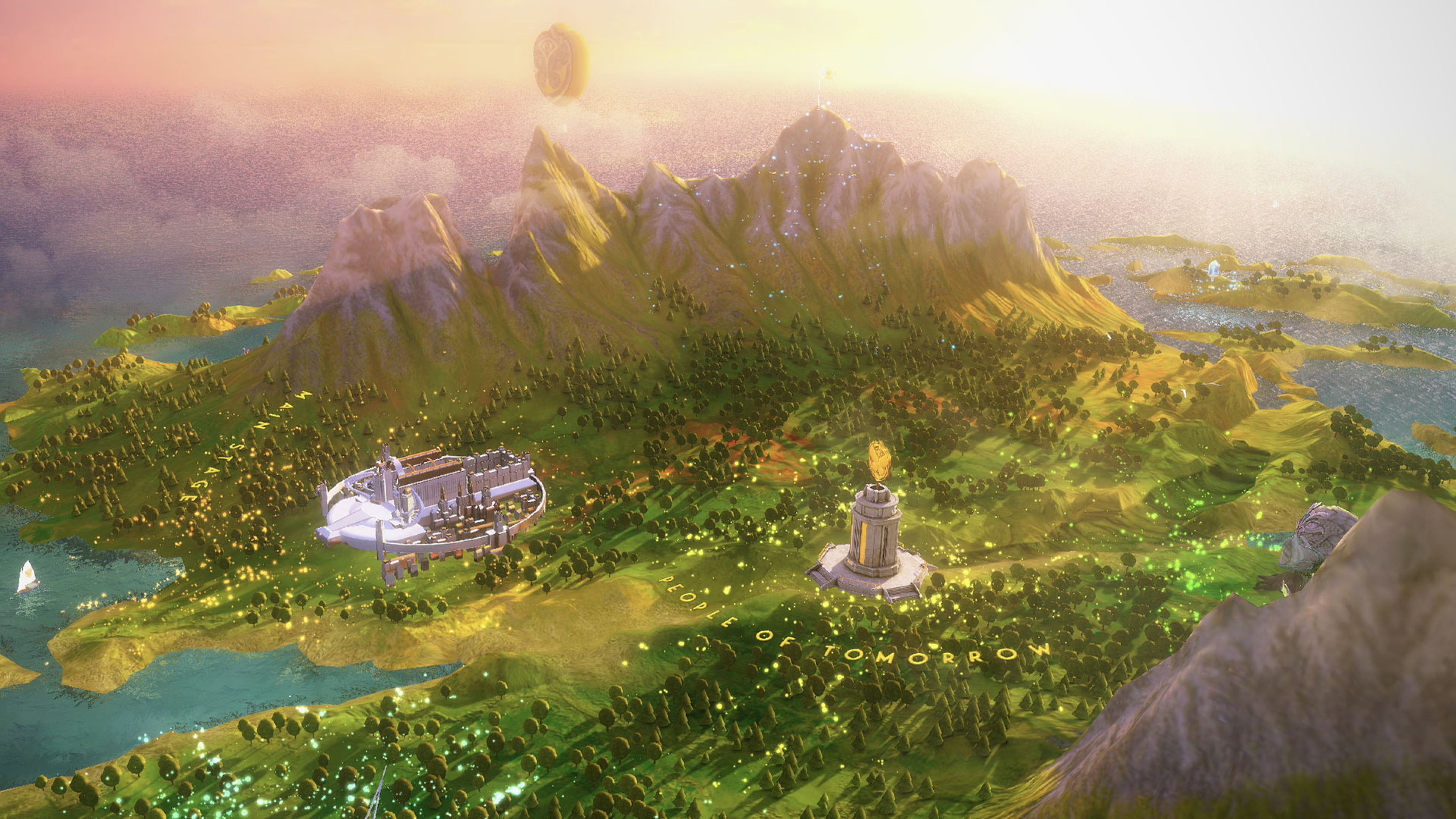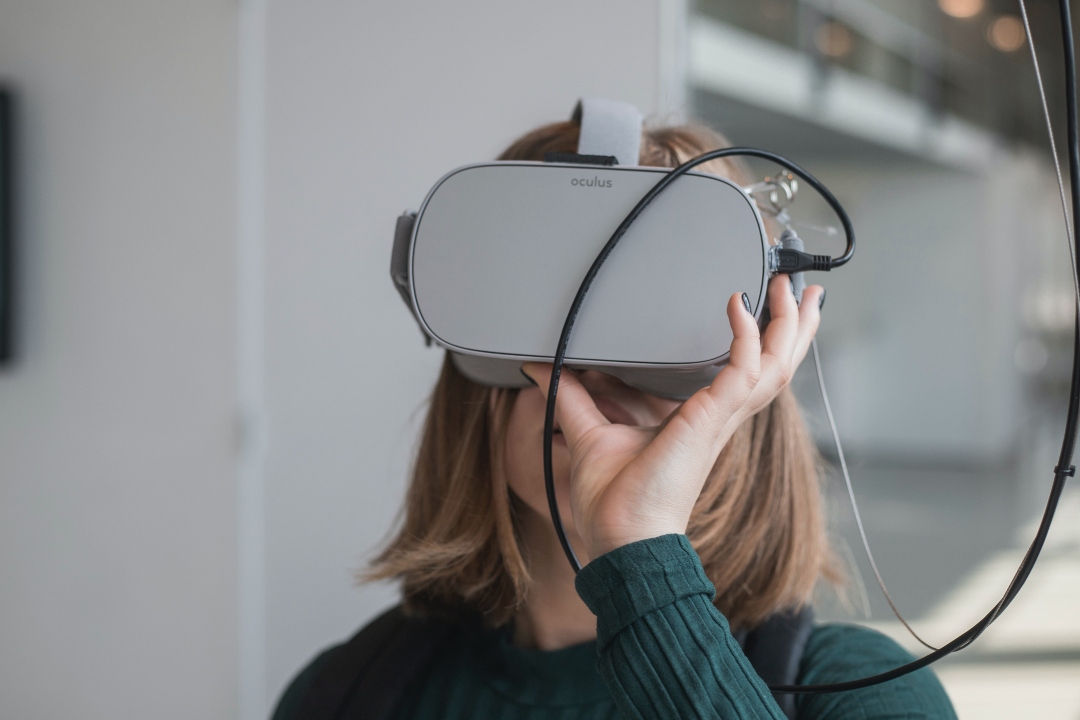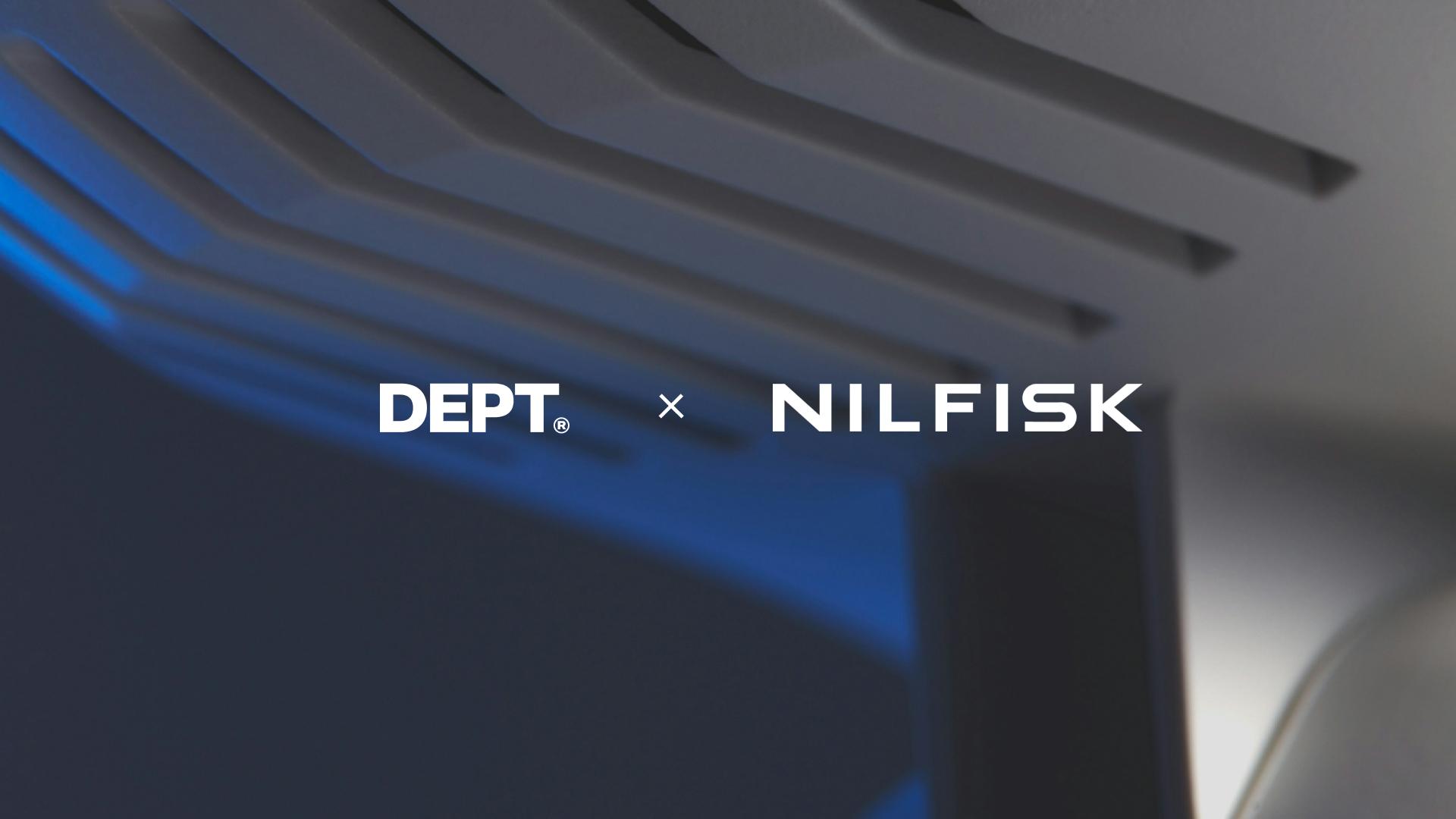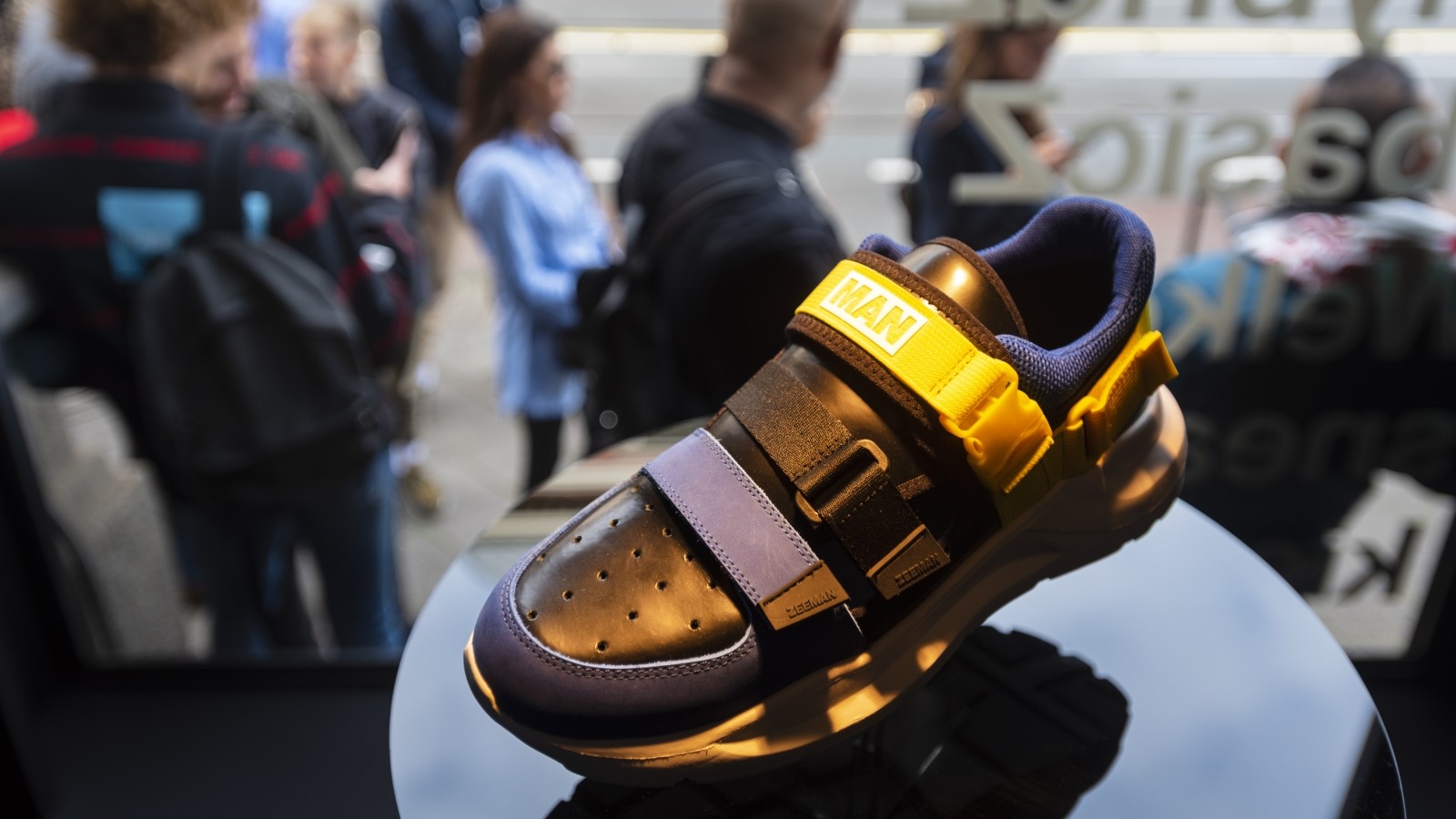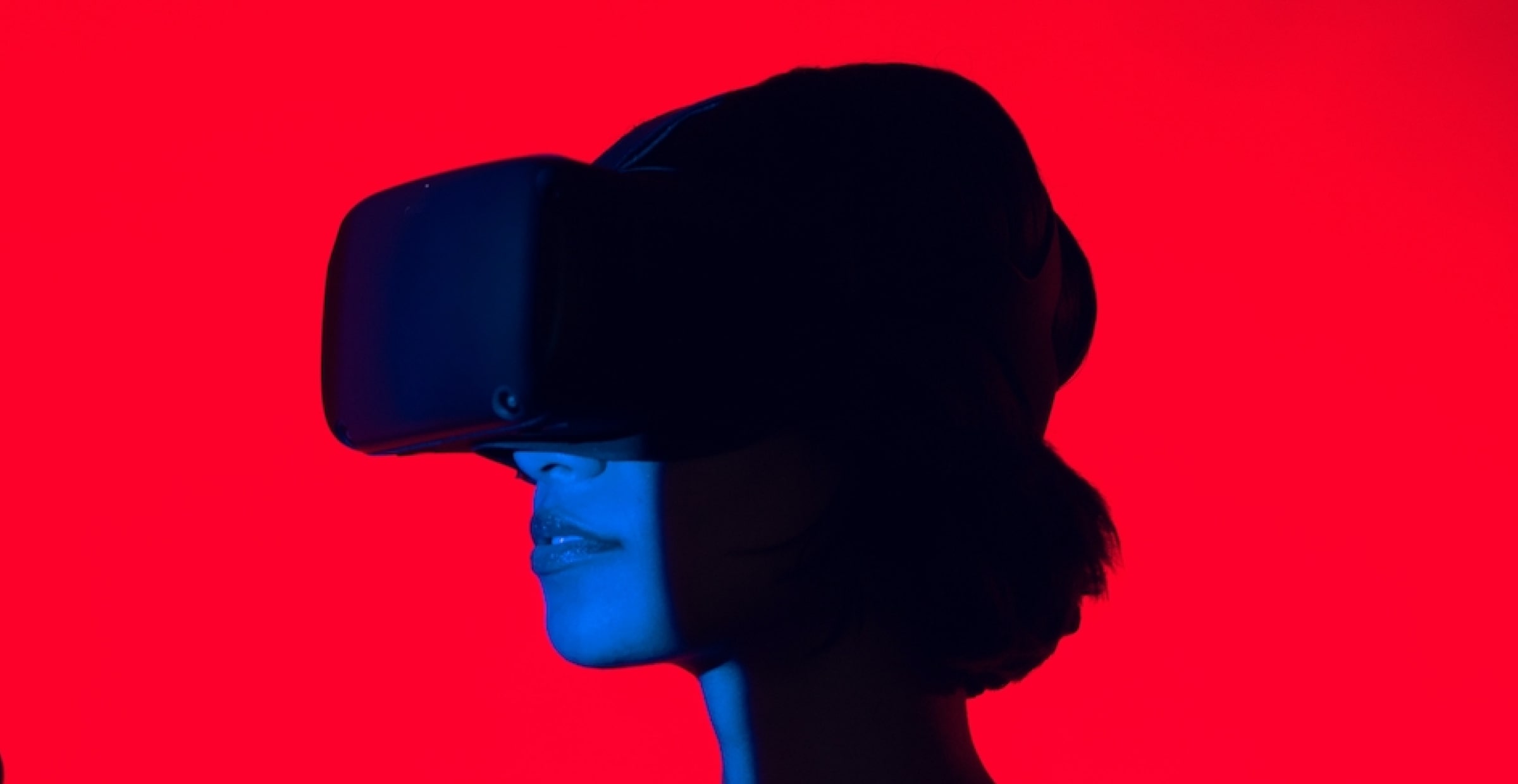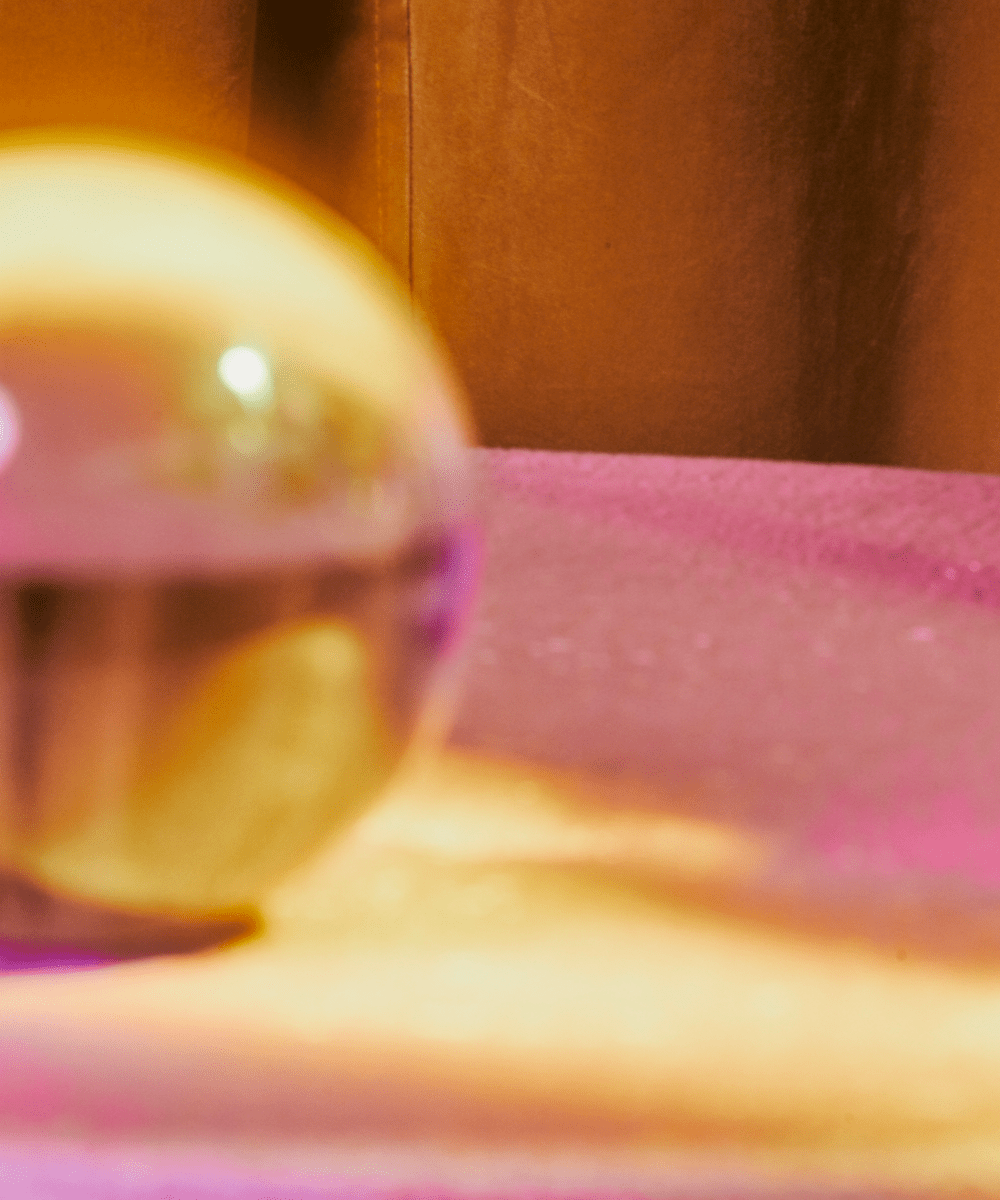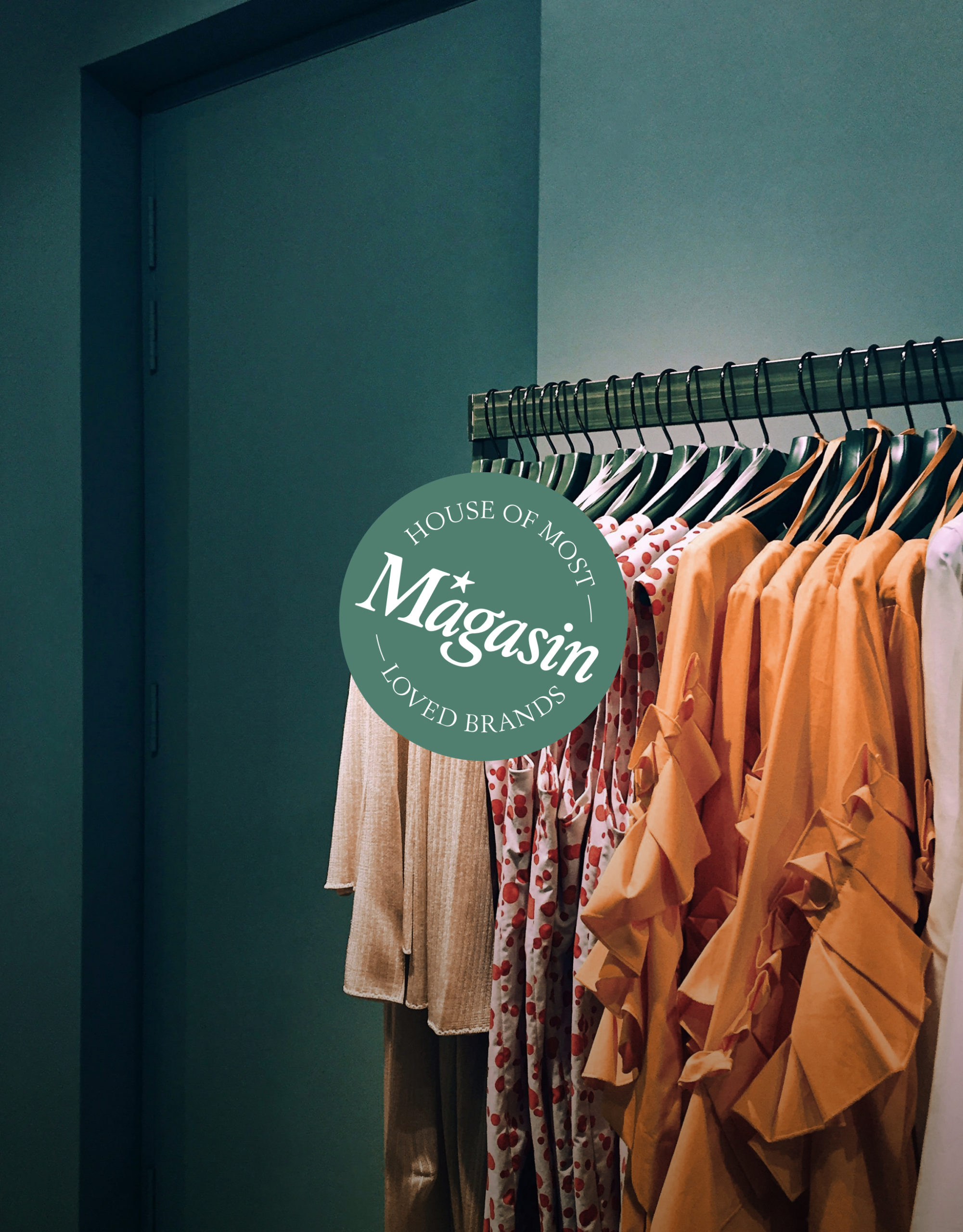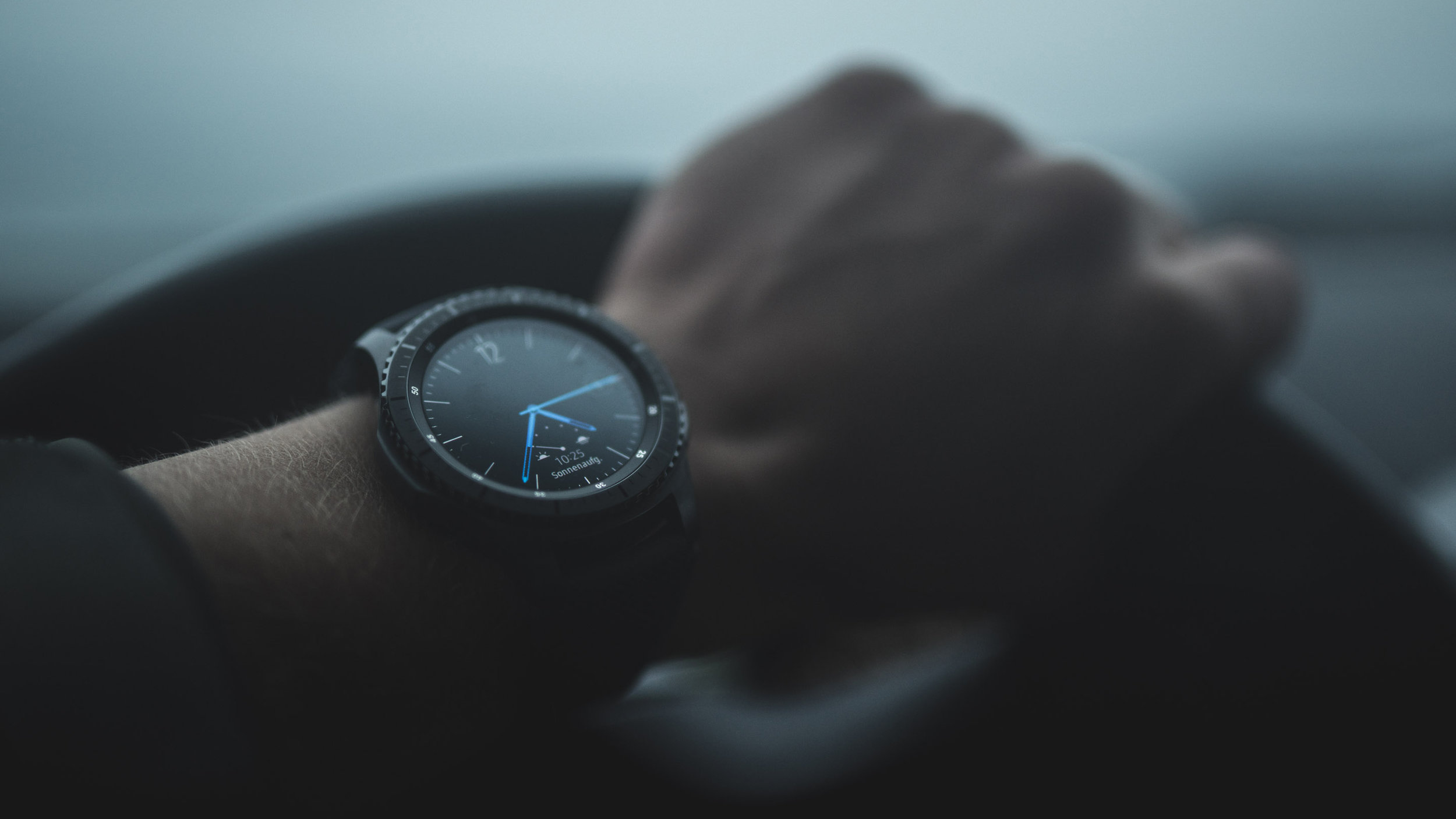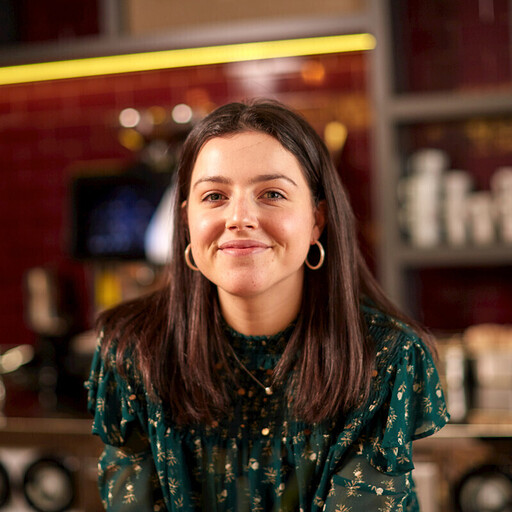H&Mbeyond is the innovation hub of the well-known Swedish fashion company H&M Group. Together with startups and innovators, its team drives forward future-oriented projects. H&Mbeyond approached us to create the first-of-its-kind, Metaverse project for the H&M brand: the Virtual Showroom.
A central point for meaningful exchanges
In keeping with the current zeitgeist, H&Mbeyond approached us with the idea of expanding H&M’s physical showrooms with a digital showroom. Based on the former, it should reflect the brand’s identity and values, just virtually instead of physically. A space without opening hours, where a wide variety of target audiences such as influencers and stylists, customers, employees, and the press can meet and learn more about H&M and its collections. The Virtual Showroom was to serve as a central point for meaningful exchanges in an immersive environment. Targeted tours by the H&M showroom team were intended to inform the audience about current trends and topics such as sustainability and new, innovative materials.
The number of visitors, countries of origin and the average time spent in the individual areas (which can be helpful for future brand activations), were defined as KPIs for this new showroom. KPIs including click rates of downloadable materials and qualitative feedback from showroom guests and media stakeholders are to follow soon.
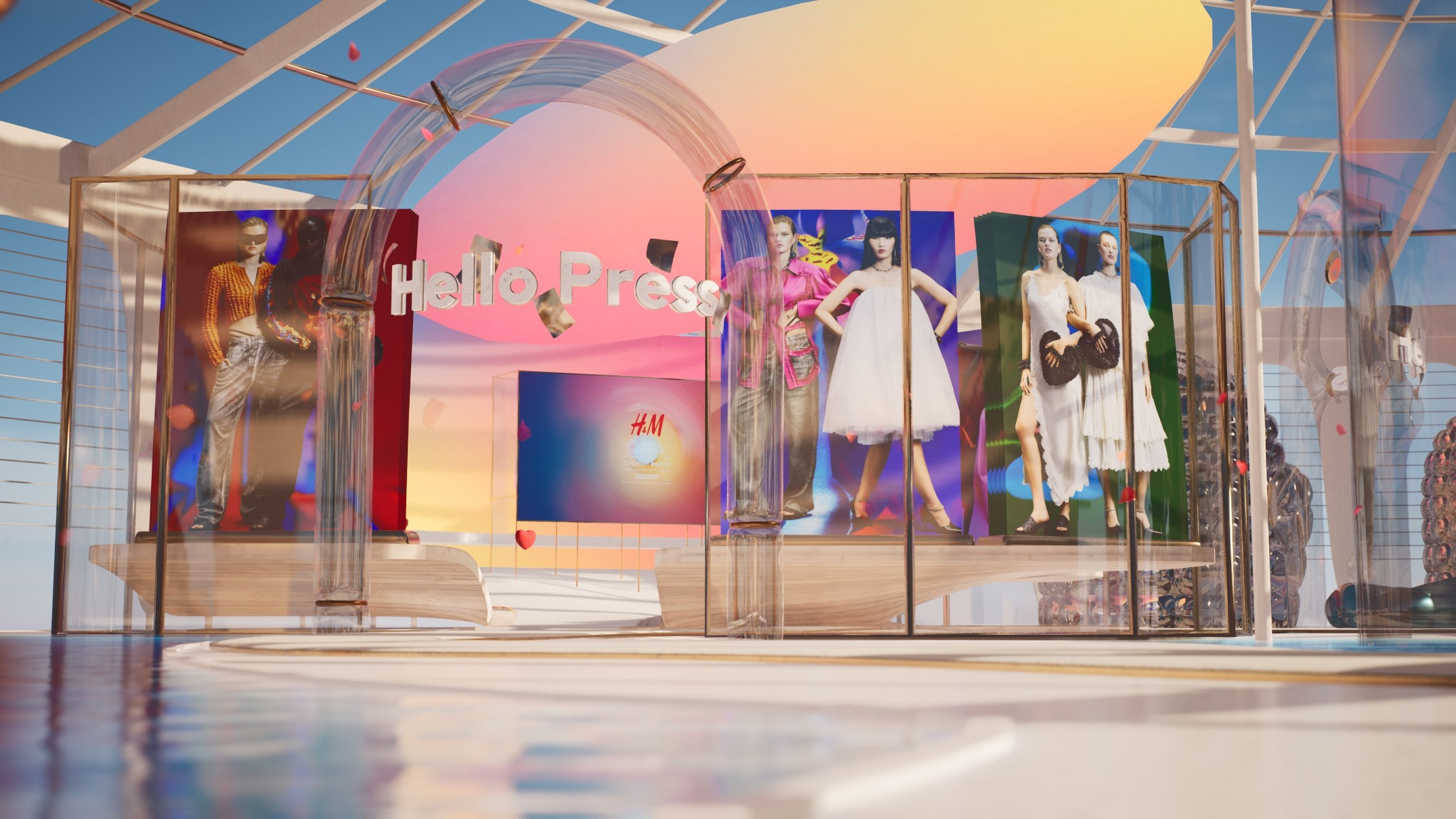
Bringing collections to life
How can we experience clothing when we can’t touch it or wear it? What added value does a digital experience offer visitors and customers? Together with our partner Journee – The Metaverse Company™, we explored solutions to these questions to develop a virtual, custom-fit world for H&M. In the H&M Virtual Showroom, content on H&M’s innovation topics and sustainability efforts are presented, alongside ‘information zones’, designed especially for the press or users interested in a conversation.
The look of the showroom is based on the DNA of the H&M brand, with appropriately designed areas for the most important topics such as the ‘Sustainability Garden’ (where information on the innovative material ‘AirCarbon’ is shared), or the H&M Home influencers meeting area.
The ‘Campaign Room’, accessible through a portal, is where the new H&M Innovation Stories campaign ‘Cherish Waste’ is interpreted in a fascinating new way. Here, Creative Director Ann-Sofie Johansson and Concept Designer Ella Soccorsi give insights into the design process of the collection and the campaign, as well as the materials used in the clothing. The highlight of this room are the six main pieces of the collection which dominate the room as detailed, oversized 3D graphics. The flowing movement and vivid colours of the graphics really bring the pieces to life. Special Collections, in particular, lend themselves to the creation of such individual spaces, with a wide variety of brand activation options and providing unique, added-value for the visitors and the H&M showroom team.
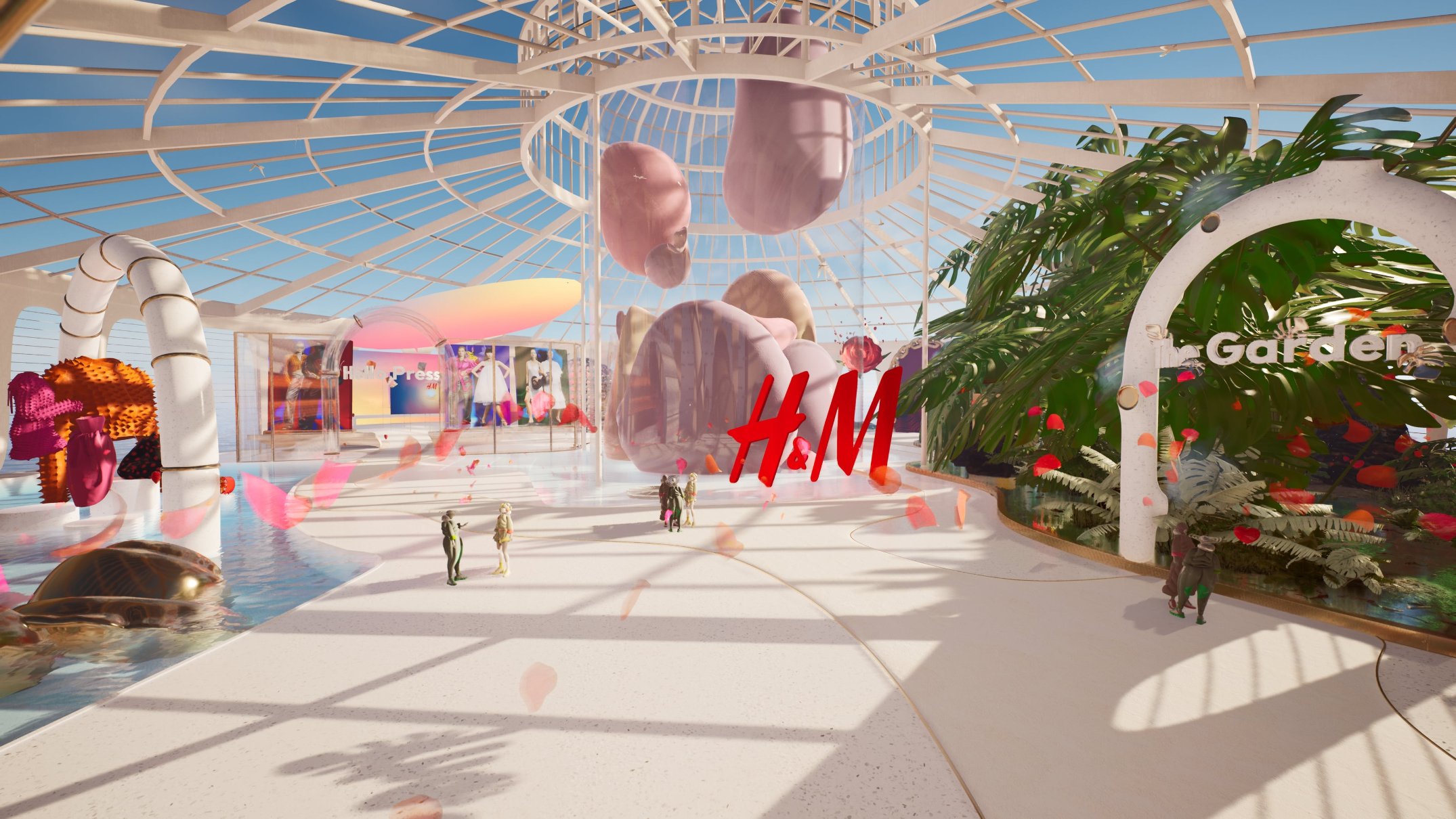
From vision to (virtual) realisation
We developed all of the components mentioned above together with Journee and in close cooperation with H&M. The vision of the showroom grew piece by piece; our strategists developed the concept, and the designers brainstormed, scribbled and designed creative mood boards based on the creative direction of the campaign and the H&M brand DNA.
With the help of H&M’s user insights, we designed the user flows for the influencers, stylists and journalists at an early stage, which provided the necessary guidance during the creative process. With the design ideas sharpened, we continued to optimise the concept and content until everything could be implemented (virtually) by Journee, using Unreal.
The first test tours in the Virtual Showroom, plus the positive feedback and ideas received from H&M stakeholders, helped us to round off the H&M Web3 experience. Paths were rerouted, trees moved, images swapped, and descriptions added.

An immersive user experience
The three avatar designs represent an important message: the need for more diversity and inclusion in fashion. With the avatars, users can move freely in the Virtual Showroom, so we paid special attention to user guidance, orientation and the order in the rooms. Even inexperienced users can navigate through the showroom with the help of various aids and explanations, helping them to discover everything in a playful way. Thanks to the separate rooms and different areas in the H&M Virtual Showroom, users can explore and experience the brand and the respective collections, or they can quickly find what they are looking for by simply teleporting to their desired destination.

Results
A survey carried out with Gen Z visitors to the Virtual Showroom has resulted in very positive feedback:
69% of the respondents said that the showroom had aroused their interest in a virtual H&M brand experience.
In addition, 80% of the respondents are already interested in participating in a virtual H&M brand experience as an H&M Hello member.
Finally, 85% of the visitors surveyed rated the virtual showroom experience as very positive.
Remarkable press reviews
“Previous digital press meetings were nothing compared to this experience. Amazing space and visual execution, i.e. 3D moving garments in campaign room.” GLAMOUR
“Congrats to the space. In love especially with the visuals.” VOGUE
“Super cool to experience such an entirely new and imaginary environment. Love the photo booth to share.” FASHION UNITED
“Within only 12 weeks, we created a first-of-its-kind metaverse experience with the team from DEPT® and JOURNEE, which not only triggered positive feedback from the target group and a remarkable press echo. The project is also the impetus for further innovation projects within the H&M Group. I am looking forward to further collaboration with the team and am excited to see how we will shape Web3 together in the future.”
– Oliver Lange, Head of H&Mbeyond.
What’s next?
By working in true collaboration throughout an iterative process, the requirements of H&Mbeyond.’s innovation approach were optimally understood and implemented. In the future, the Virtual Showroom is expected to host events such as launches, meetings, and concerts for larger audiences, all in addition to the presentation of new collections.
“H&M’s Virtual Showroom is designed as a space for brand activations such as fashion campaigns. These are brought to life in a whole new and exciting way, combining innovation, digitalisation and sustainability. It makes me very proud to see how much energy, heart and soul our colleagues across countries and departments have put into this project. We are looking forward to exploring the potential in the countries of the Central Europe region and beyond.” Thorsten Mindermann, Regional Manager, H&M Central Europe.
A virtual concert goes through the roof
After the great success of the virtual showroom and the positive feedback from the target groups, H&Mbeyond also wanted to offer an immersive experience to the end consumers. After extensive pitch and evaluation phases with a focus on Gen Z, the idea for the first virtual concert in the Metaverse was born. To build on the success of the Virtual Showroom with Love as quickly as possible, local and global marketing teams at H&M developed a concept in record time. In developing the immersive experience, the aspects of engagement and community were at the very top of the agenda. H&M finally managed to get the five-member ‘P-Pop’ boy band BGYO to perform the concert and realise it together with Journee and the existing technology. A new area was created in the existing showroom.
The result exceeded H&Mbeyond ‘s expectations. For example, the concert dominated social media channels and was covered by the TV station CNN Philippines. Communication about the virtual event eventually went viral. After the concert, some participants were surveyed. According to this survey, the interest in such immersive experiences is very high. In addition, the great demand for products in the form of physical and digital merchandise of the band motivated H&Mbeyond to think further in this direction.
The road to metaverse commerce
At our DEPT® Commerce Day 2022, Oliver Lange from H&Mbeyond. and Jan Gutkuhn, Director Web3 at DEPT®, talked about the creation of the Virtual Showroom with Love.
Take a look behind the scenes and get exciting insights on the topic of The Road to metaverse commerce in the following video.
Questions?
Director Marketing & Business Development
Gesine Meitler
DEPT® has launched WEB3/DEPT® to support the fastest growing segment of its business. The 300-person team, which has been responsible for 5% of DEPT®’s revenue this year, will help clients experiment with blockchain technology, build immersive experiences in the metaverse and deliver multi-layer strategies for launching NFTs.
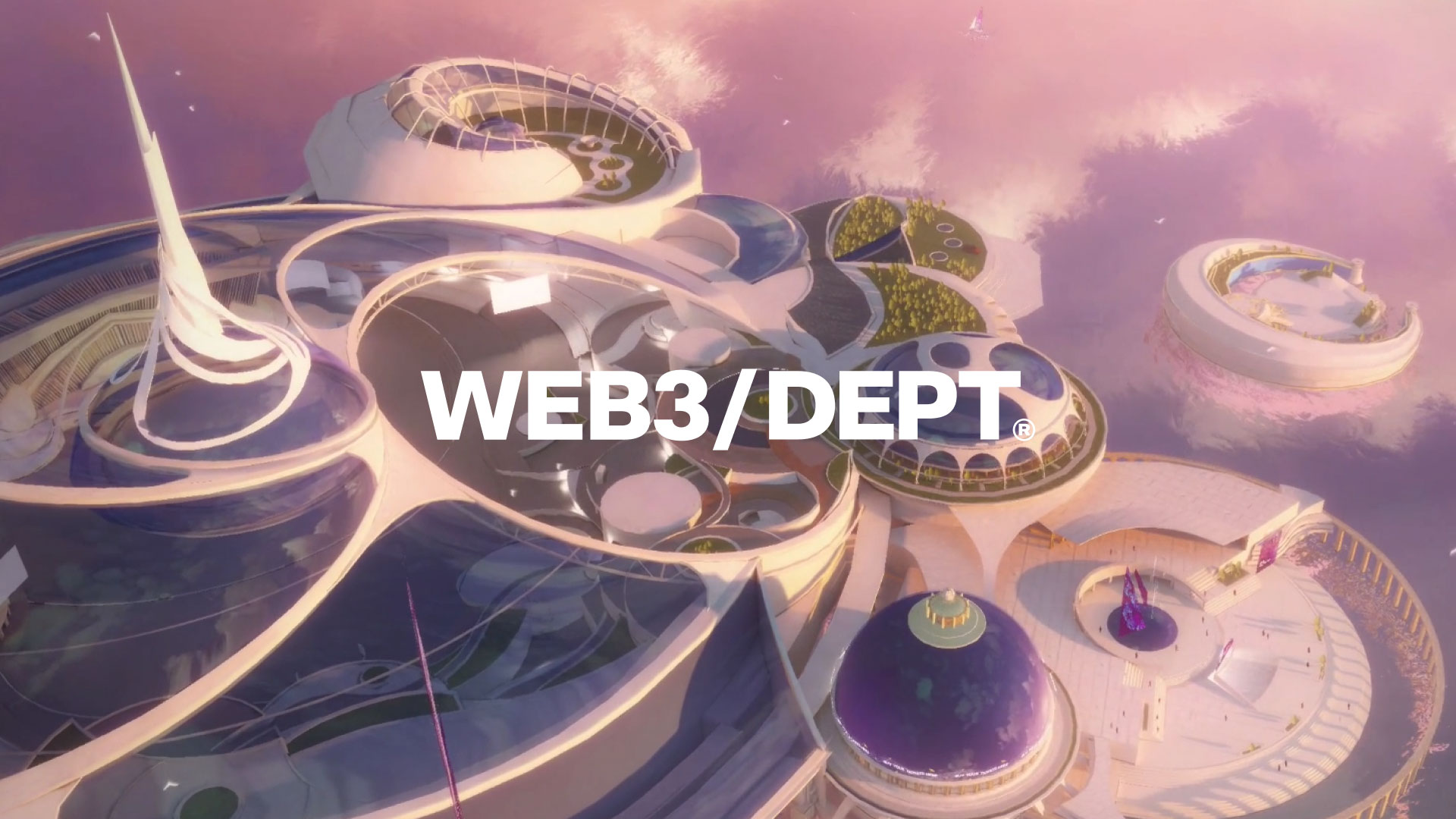
“Web3 and the metaverse are the two transformational technological evolutions of the next decade,” said Isabel Perry, vice president at WEB3/DEPT®. “But it’s hard for CMOs and CIOs to figure out where to start. Over the last two years, we’ve helped so many brands to redefine the way they interact with their customers that we feel it’s time to combine all this expertise and knowledge under the WEB3/DEPT® banner.”
The team has worked on over 60 Web3-focused projects, including industry firsts and award-winning work for brands like H&M, Tomorrowland, SPIN, Eurovision, Sprite (together with Marvel) and Dubai World Expo, as well as Web3 natives including HAPE, Circle, Dequency, Yuga Labs and Merit Circle.
DEPT®’s Web3 experience is grounded in a heavy tech focus and dates back to 2015 when it helped build the first-ever crypto bank with Circle. Since then, the agency has built expertise on blockchain applications and marketplaces, including creating Algomart, the world’s first open source solution built on the sustainable Algorand blockchain for launching an NFT marketplace.
DEPT® is also responsible for a number of immersive experiences across the web, AR/VR/XR, gaming and the metaverse, including:
- A $100 million Metaverse R&D Hub in Melbourne for Thai media giant T&B Media Global as part of the company’s ambitious $420 million plan to develop Translucia – an immersive metaverse experience for global technology users.
- A unique Web3 experience for fashion brand H&Mbeyond which turned their showroom into an immersive, virtual experience.
- The first online shop for digital NFT fashion for HYPEWEAR by ABOUT YOU.
- The award-winning Cookie Monster AR game within the Sesame Street Yourself app where kids collect ingredients from around their physical environment to help Cookie Monster cook a batch of cookies.
- An interactive AI trading card experience for eBay at Comic Con 2022.
- The world’s first real-life gaming experience played out live on Twitch to create hype around the premiere of Amazon Prime Video’s WITHOUT REMORSE.
“Web3 feels a bit like mobile back in 2006 – still in its infancy but bound to be impactful for everyone, everywhere,” said Dimi Albers, CEO at DEPT®. “We want to lead the charge and help our clients navigate these transformational technologies for the next decade. We think the combination of our strong intellectual property, track record of delivering more than 60 web3 projects, and our diverse mix of engineers, creatives and strategies who ’get’ the web3 vision sets us apart, along with our ambitious R&D plans across EMEA, the US and Asia Pacific.”
WEB3/DEPT® will make it easier for clients to tap into the agency’s expertise in Web3 business transformation, blockchain technologies, immersive web experiences, AR, VR, gaming and the metaverse, as well as proprietary solutions for blockchain, webGL, pixel streaming and blockchain education. The team will also introduce a new Web3 Labs platform to help both clients and employees better understand web3 fundamentals, including the difference between crypto coins and crypto tech, why decentralised tech is here to stay, and primers on wallets, NFTs, DAOs, marketplaces, stablecoins, etc.
Founded in Amsterdam in 2015, DEPT® is made up of more than 3,500 people in seventeen countries across five continents and hit $500 million in revenue this year. The Certified B Corporation was named Agency Network of the Year at the Webby Awards and Agency of the Year by the Lovie Awards, including more than 30 awards for its pioneering Web3 work.
WEB3 Insights
Discover moreContact the WEB3/DEPT® team
VP of Emerging Tech
Isabel Perry
Below are top takeaways from a panel conversation from the recent DEPT® event, ‘Web3: A new era for the Internet’.
To view the full discussion, scroll to the bottom of this page or watch the YouTube replay here.
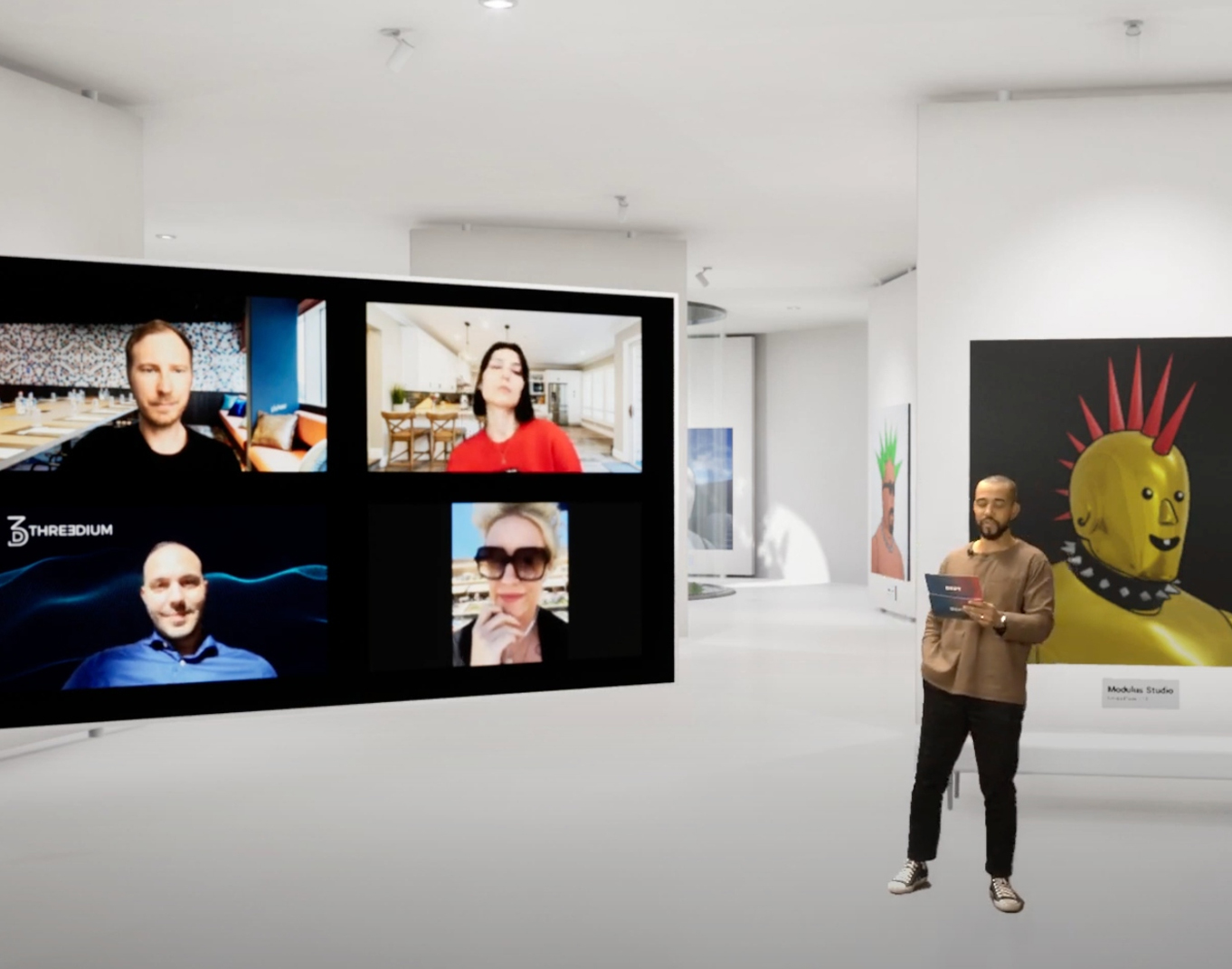
Meet your panel
This panel features a discussion between Tobias Cummins, Director at DEPT® alongside four Web3 experts
- Paula Marie Kilgarriff, Web3.0 consultant
- Mike Charalambous, CEO of Threedium
- Stefania Barbaglio, founder at Cassiopeia Services
- Tim Walther, Metaverse & NFT at Volkswagen Group
Below, many Web3 topics are discussed, including how to prepare for Web3, what the metaverse will look like, and how brands can dive in.
Where should brands begin?
Paula Marie Kilgarriff: In fashion/retail, the web3 space is basically a 3D virtual shopping experience, so what I say to brands is that you need to create 3D assets and prepare your website for 3D.
When I say virtual stores, I don’t mean VR and headsets. Use your web browser to interact with a website that has 3D objects. These 3D objects give customers an opportunity to co-create certain kinds of products online.
Mike Charalambous: I couldn’t agree more. We’re actually more of a web2.5 advocate. The reason being is that most brands and agencies have revenue tied to their e-commerce shops.
A steady system needs to be shored up before your start to get your hands dirty with 3D. 3D is not your standard photography. They have their own lighting environment and their own behavior.
So once brands understand the techniques of 3D objects and how different commerce solutions use 3D, then AR product explorers can innovate and trigger specific consumer behaviors. This allows them to gather data and test them on avatars.
What are the key areas of readiness for Web3?
Tim Walther: In general, you have to dig deep into web3. You have to be aware of what is happening in this space because it is so different from web2.
Customers for your NFT/experience will be a lot different from customers of the past. In the past, you might have fans to which you’re speaking, but now (if you’re selling an NFT), you might have a small shareholder.
To do it right you must have a working roadmap, inroads in place to speak to your communities, and an understanding of how the communities interact with web3. The risk of doing something wrong is big.
To test/learn, find good partners that have a proven record. Learn from them and only then take a bigger step forward.
Is Web3 relevant for some brands more than others?
Stefania Barbaglio: Yes, I think not only fashion but the entire luxury market. Jewelry, cars, drinks, etc. Anything that needs a way to authenticate could benefit from blockchain technologies. Even the secondary market, so buyers can verify that their purchases are authentic.
Tim Walther: If you look back one year, NFTs were more or less digital images and pieces of art that are connected to the blockchain. In the past year, others have shown us what can happen with a smart contract.
If you connect this to a smart contract, then an NFT can become a community. It can become a key or a one-on-one relationship with your brand.
I’m certain that things will show up in the next month or years that we cannot even imagine at the moment.
The metaverse is the era where humans put equal ownership on digital goods as they do on physical goods.
Mike Charalambous, CEO of Threedium
What’s the current state of the Metaverse?
Paula Marie Kilgarriff: I would stay away from saying “the one metaverse.” What we’re doing is using technology to create 3D virtual experiences that encourage co-creation and customization.
If you think of it recently, some metaverses are centralized, some decentralized, some have tokens, some don’t have tokens, some are VR, and some are AR.
You might have a luxury metaverse or mass-market one, one for retail and another for lifestyle and entertainment.
Brands are figuring out customer touchpoints and journeys and fortifying them with different types of technology. It’s really about augmenting, not replacing other experiences.
The true value of 3D objects is the ability to understand what the customer wants when they want and how they want it.
Mike Charalambous: The most important thing is that metaverse can be anything you want it to be.
Here’s my way of breaking it down:
The metaverse is the era where humans put equal ownership on digital goods as they do on physical goods.
It’s not a butterfly-unicorn-cloudy world you go into to dance and fly.
It’s the era where consumers shift their behaviors, and they’re ready to start spending money to own something digitally, knowing that ownership can unlock different levels of rewards and accessibility for them.
Anyone has the chance to create something. Anyone has the chance to be wherever they want to be. Basically, the metaverse world will act as new means of social media channels.
So always think of the metaverse world as a social commerce channel, where people are going to be interacting with brands in different ways. We’re going to be seeing new KPIs, such as play to earn, wear to earn or sweat to earn. We’re going to be seeing a different way in how influencers and ambassadors find value–not as to how they look (beautiful faces or slim bodies) but what kind of contributions they’re making to the space.
And metaverse and NFTs don’t necessarily have to go together. NFTs are the form of a CRM for the brand, a form of utility. They unlock or enhance your relationship. NFT’s are just the means to the end, an additional way to provide rewards and a stronger sense of ownership for their customers.
Any brand that does not understand this is going to be losing market share starting from now.
It’s like the early days of social media, with smaller platforms vs Facebook. Facebook came in and crushed everybody. So there might be a metaverse world where it’s going to prevail and have massive volume versus everybody else.
But there will also be some micro-verses that are more specialized.
What are your Web3 cautionary tales?
Mike Charalambous: From the brand side, there are two major things.
1. Financial pitfalls when it comes to blockchain and cryptocurrency
2. The fact that taxation is not addressed within this full metaverse ecosystem
That makes life hard for brands to synthesize robust commercial strategies. And this forces them to spend a lot of money on tax consultations. They’re afraid that their public image might be impacted if somebody if they do something in the metaverse.
Consumer-facing, what they’re very much afraid of is ensuring that there’s going to be longevity in my relationship with the brand. How do I ensure that this token gives me that utility in real life?
They have a lack of confidence that the brands are ready to sustain and feed these relationships in perpetuity.
What are you most excited about?
Paula Marie Kilgarriff: Web3 and web3 protocols for the fashion supply chain.
So it could be Zara presenting a new collection to its stakeholders and then they vote on which products are made in that supply chain in real-time.
Stefania Barbaglio: Avatars and digital identities. There will be a different way to look at influences. The community can influence brands on what kind of influencers are selected.
Tim Walther: It’s really the community. And that also, that really means the web3 community. How are you solving X problem? That’s not happening a lot in marketing, but we’re all in the same boat.
What I love about the technology is that it is unleashing some creativity in marketing and in communication that we haven’t had in years. Social media 2.0 was very cool, very interesting, and unleashed a lot of things, but now we have something where we can basically add every, any utility.
And that leads me to the third and last point, which is you able to get closer to your customer. You can get brands and customers one-on-one. A real relationship.
Mike Charalambous: What we’re focusing on a lot is this notion of connected commerce or meta commerce.
How we can take assets, create them once, but sell them thrice across physical, digital, and the metaverse with consistent experiences.
Get your free to ticket Meta Festival on 28 June 2022
More Insights?
View all InsightsQuestions?
Sr. Content Marketing Manager
Kelsey Anderson
H&Mbeyond is the innovation hub of the well-known Swedish fashion company H&M Group. Together with startups and innovators, its team drives forward future-oriented projects. After speaking at DEPT®’s 2021 Meta Festival, Head of H&Mbeyond, Oliver Lange, approached us to create the first-of-its-kind, Metaverse project for the H&M brand: the Virtual Showroom.
A central point for meaningful exchanges
In keeping with the current zeitgeist, H&Mbeyond approached us with the idea of expanding H&M’s physical showrooms with a digital showroom. Based on the former, it should reflect the brand’s identity and values, just virtually instead of physically. A space without opening hours, where a wide variety of target audiences such as influencers and stylists, customers, employees, and the press can meet and learn more about H&M and its collections. The Virtual Showroom was to serve as a central point for meaningful exchanges in an immersive environment. Targeted tours by the H&M showroom team were intended to inform the audience about current trends and topics such as sustainability and new, innovative materials.
The number of visitors, countries of origin and the average time spent in the individual areas (which can be helpful for future brand activations), were defined as KPIs for this new showroom. KPIs including click rates of downloadable materials and qualitative feedback from showroom guests and media stakeholders are to follow soon.
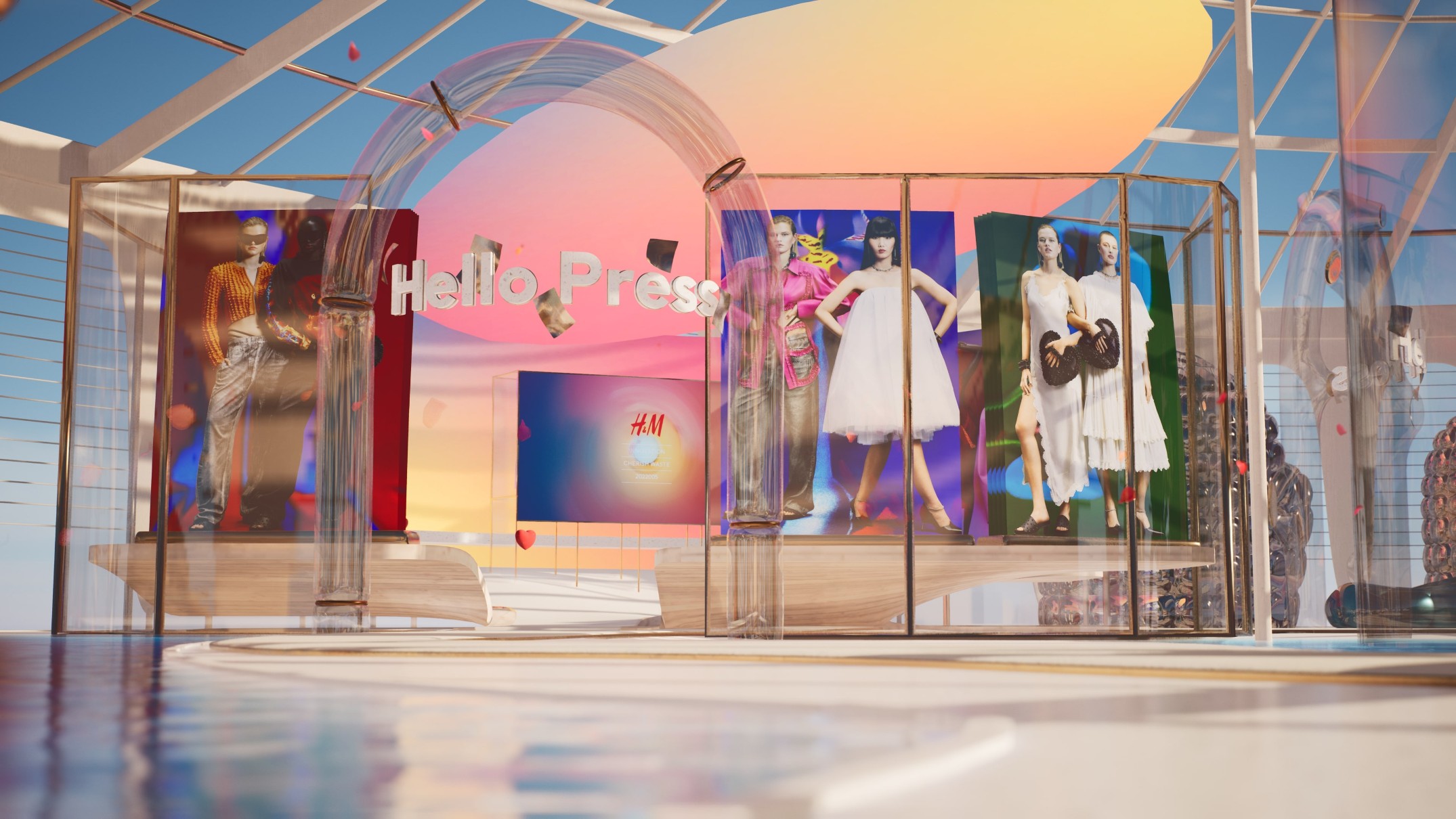
Bringing collections to life
How can we experience clothing when we can’t touch it or wear it? What added value does a digital experience offer visitors and customers? Together with our partner Journee – The Metaverse Company™, we explored solutions to these questions to develop a virtual, custom-fit world for H&M. In the H&M Virtual Showroom, content on H&M’s innovation topics and sustainability efforts are presented, alongside ‘information zones’, designed especially for the press or users interested in a conversation.
The look of the showroom is based on the DNA of the H&M brand, with appropriately designed areas for the most important topics such as the ‘Sustainability Garden’ (where information on the innovative material ‘AirCarbon’ is shared), or the H&M Home influencers meeting area.
The ‘Campaign Room’, accessible through a portal, is where the new H&M Innovation Stories campaign ‘Cherish Waste’ is interpreted in a fascinating new way. Here, Creative Director Ann-Sofie Johansson and Concept Designer Ella Soccorsi give insights into the design process of the collection and the campaign, as well as the materials used in the clothing. The highlight of this room are the six main pieces of the collection which dominate the room as detailed, oversized 3D graphics. The flowing movement and vivid colours of the graphics really bring the pieces to life. Special Collections, in particular, lend themselves to the creation of such individual spaces, with a wide variety of brand activation options and providing unique, added-value for the visitors and the H&M showroom team.
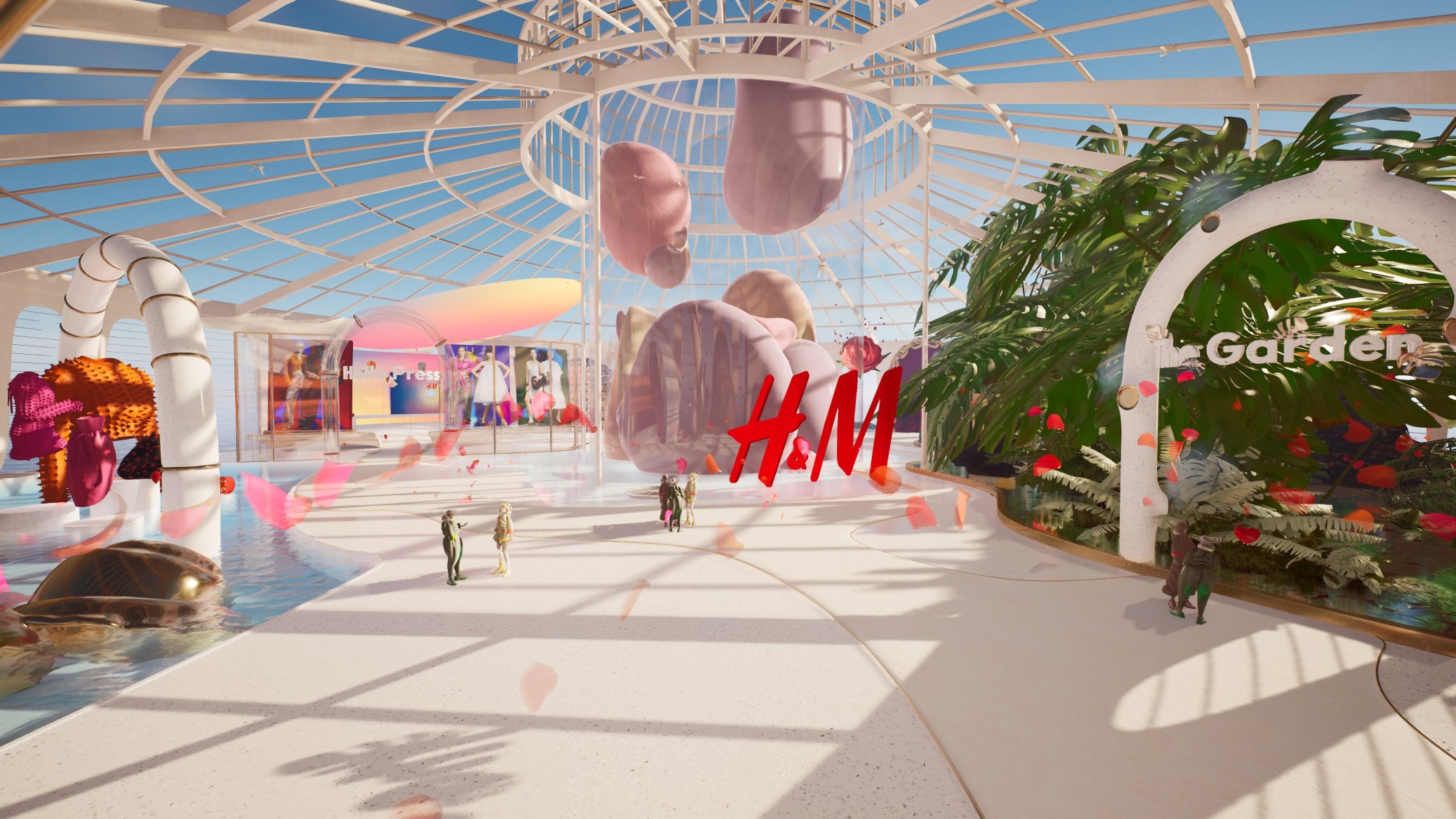
From vision to (virtual) realisation
We developed all of the components mentioned above together with Journee and in close cooperation with H&M. The vision of the showroom grew piece by piece; our strategists developed the concept, and the designers brainstormed, scribbled and designed creative mood boards based on the creative direction of the campaign and the H&M brand DNA.
With the help of H&M’s user insights, we designed the user flows for the influencers, stylists and journalists at an early stage, which provided the necessary guidance during the creative process. With the design ideas sharpened, we continued to optimise the concept and content until everything could be implemented (virtually) by Journee, using Unreal.
The first test tours in the Virtual Showroom, plus the positive feedback and ideas received from H&M stakeholders, helped us to round off the H&M Web3 experience. Paths were rerouted, trees moved, images swapped, and descriptions added.

An immersive user experience
The three avatar designs represent an important message: the need for more diversity and inclusion in fashion. With the avatars, users can move freely in the Virtual Showroom, so we paid special attention to user guidance, orientation and the order in the rooms. Even inexperienced users can navigate through the showroom with the help of various aids and explanations, helping them to discover everything in a playful way. Thanks to the separate rooms and different areas in the H&M Virtual Showroom, users can explore and experience the brand and the respective collections, or they can quickly find what they are looking for by simply teleporting to their desired destination.

Results
A survey carried out with Gen Z visitors to the Virtual Showroom has resulted in very positive feedback
- 69% of the respondents said that the showroom had aroused their interest in a virtual H&M brand experience.
- In addition, 80% of the respondents are already interested in participating in a virtual H&M brand experience as an H&M Hello member.
- Finally, 85% of the visitors surveyed rated the virtual showroom experience as very positive.
Remarkable press reviews
“Previous digital press meetings were nothing compared to this experience. Amazing space and visual execution, i.e. 3D moving garments in campaign room.” GLAMOUR
“Congrats to the space. In love especially with the visuals.” VOGUE
“Super cool to experience such an entirely new and imaginary environment. Love the photo booth to share.” FASHION UNITED
Within only 12 weeks, we created a first-of-its-kind metaverse experience with the team from DEPT® and JOURNEE, which not only triggered positive feedback from the target group and a remarkable press echo. The project is also the impetus for further innovation projects within the H&M Group. I am looking forward to further collaboration with the team and am excited to see how we will shape Web3 together in the future.
Oliver Lange, Head of H&Mbeyond.
What’s next?
By working in true collaboration throughout an iterative process, the requirements of H&Mbeyond’s innovation approach were optimally understood and implemented. In the future, the Virtual Showroom is expected to host events such as launches, meetings, and concerts for larger audiences, all in addition to the presentation of new collections.
“H&M’s Virtual Showroom is designed as a space for brand activations such as fashion campaigns. These are brought to life in a whole new and exciting way, combining innovation, digitalisation and sustainability. It makes me very proud to see how much energy, heart and soul our colleagues across countries and departments have put into this project. We are looking forward to exploring the potential in the countries of the Central Europe region and beyond.” Thorsten Mindermann, Regional Manager, H&M Central Europe.
Questions?
Director Marketing & Business Development
Gesine Meitler
Discover more
Welcome to Web3, a new kind of internet.
Where Web2 was defined by corporate giants, Web3 is defined by a host of revolutionary new technologies. From AR and AI to machine learning and blockchain, these technologies have created a wealth of opportunity for innovation that we will explore during this one-of-a-kind livestream event.
Featuring two main stages and a series of lightning talks, this DEPT® Talk serves as both an introduction to Web3 and also as a deep dive into its potential.
• Explore the technologies behind Web3’s infrastructure, including blockchain and cryptocurrency.
• Unpack the Web3 experience, including NFTs, collectibles, and, of course, that thing everyone’s talking about: the metaverse.
• From CMO to CIO; hear from some of the experts behind our changing internet. Which game-changing projects they’re working on and what they believe Web3’s impact on the future will be.
Don’t miss your chance to make your brand a part of the internet’s latest era. Reserve your slot to learn how Web3 can boost your business and what new innovation lies around the corner.
3:00pm – 5:00pm CEST / 2.00pm – 4:00pm BST / 9:00am – 11:00am ET
Web3: A new era for the internet
Date
From
Where
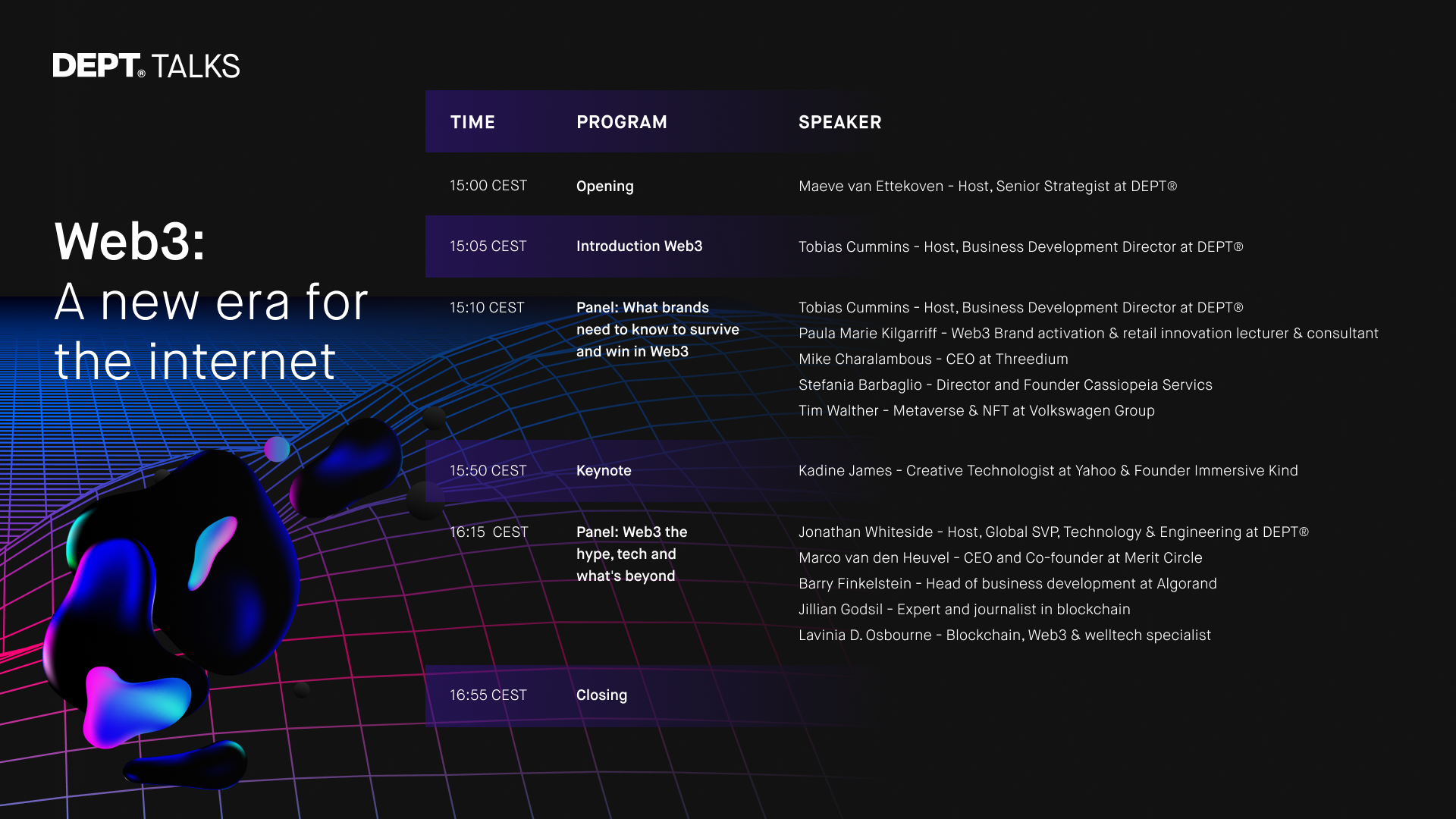
More Insights?
View all Insights
For the third year running, DEPT® is celebrating being named Network of the Year and Agency of the Year at The Webby Awards.
It’s been another impressive year of wins for DEPT® with 21 wins, 10 nominations, and 18 honorees for our work with brands including Gucci, Bang & Olufsen, Cowboy, and Virgin Galactic.
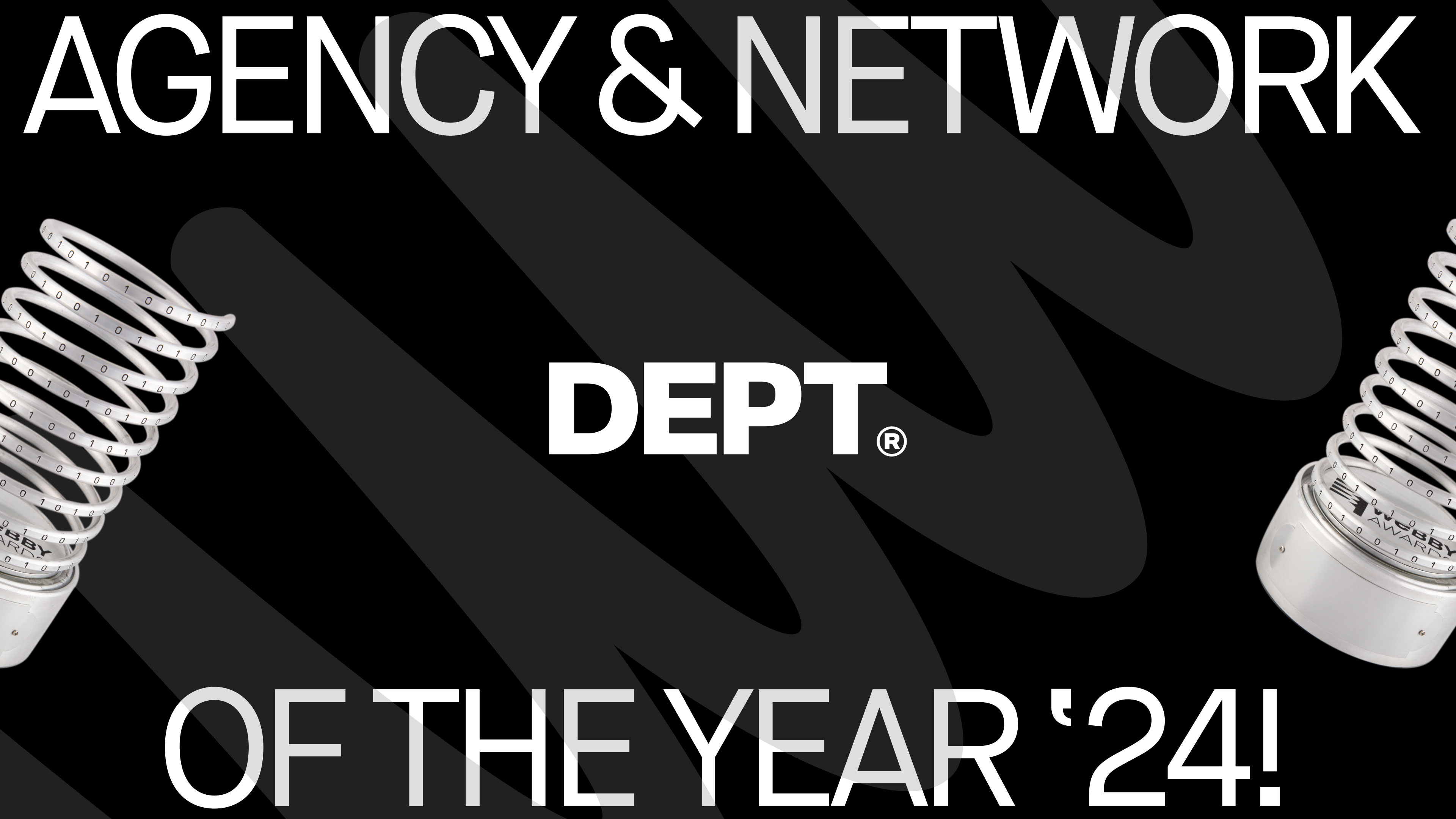
Setting new standards for the next era
The Webby Awards is the internet’s most respected symbol of success, attracting over 13,000 entries from 70 countries worldwide. With an esteemed jury and over two million votes cast by more than 600,000 people in the Webby People’s Voice, work by DEPT®, BASIC/DEPT®, HELLO MONDAY/DEPT® and DOGSTUDIO/DEPT® has been selected as the best in its category, reinforcing our position as a leading agency that’s setting the standard for tech and marketing.
“Winning Agency and Network of the Year for the third time straight was something I never even dreamed of when we started DEPT®,” says Dimi Albers, CEO of DEPT®. “I really want to give a big shoutout to our awesome clients, our hard working teams, the jury, and everyone who voted. Your support means everything to us. We’re pumped to keep pioneering tech and marketing, especially with our AI and impactful projects. Thanks so much, everyone!”
The winners
Bang & Olufsen: See yourself in sound
Hello Monday/DEPT®
Webby Winner & People’s Voice: Best Use of Animation or Motion Graphics
People’s Voice: Best User Experience
For high-end consumer electronics brand, Bang & Olufsen, Hello Monday/DEPT® created a web app that gives every user a uniquely sensory experience. ‘See Yourself in Sound’ is designed to generate a vibrant, one-of-a-kind avatar for every visitor, crafted in real-time by analyzing your Spotify sound profile and aligning your overall mood and energy levels to all the aspects of a 3D character. After your 3D character is generated, it can be shared with the world via link or a video that’s created just for you.
Cowboy: Elevating a luxury ebike website to match its brand’s elegance
BASIC/DEPT®
Webby Winner: Best Visual Design – Function
The elevated digital brand experience we created for ebike pioneers, Cowboy, showcases its new ebikes as works of art designed to bring forth true freedom of movement. We crafted a gallery-like site that shows off the beauty of the bike and the intelligence of its design and function, ultimately inspiring site visitors to believe anywhere was possible with Cowboy.
Daniel’s Music Foundation: Raising the bar for accessible design
BASIC/DEPT®
People’s Voice: Accessible Technology
Daniel’s Music Foundation is a nonprofit empowering people with disabilities through music and Disability Awareness programs that has been changing lives in NYC for almost 20 years.
They needed a website that could keep up, so they came to us for a new one that would build trust, share joy, showcase impact, and also be accessible to people of all abilities. We raised the bar of excellence in accessible design; rather than modifying an experience for a few, it’s about finding ways to translate it for everyone to equally join the fun.
GiveAHand
HELLO MONDAY/DEPT®
People’s Voice: Responsible AI
Following on from Hello Monday/DEPT®’s multi-award winning approach to teaching the American sign language alphabet, Fingerspelling, we launched GiveAHand.ai – the world’s largest open-source image library of hands fully tagged with data to help build better hand models.
One hundred percent crowdsourced, the data collected in the platform will generate a diverse dataset of hands, building an image library that will help unlock sign language. Researchers can then download and use these fully tagged images to improve their machine learning models, truly allowing the detection and translation of the full spectrum of Sign Language.
Google Store: Bringing the best of Google to people worldwide
BASIC/DEPT®
People’s Voice: Best Practices
Our collaboration with the Google Hardware team has helped turn store.google.com into a world-class brand and e-commerce destination.We’ve contributed end-to-end services, ranging from eCommerce strategy and experience design to art direction, content creation, and campaign development.
Google Jigsaw
HELLO MONDAY/DEPT®
Webby Winner: Corporate Social Responsibility
Jigsaw is a unit within Google that researches threats to open societies, and builds technology, products and tangible methods that inspire scalable solutions. Info Interventions is a collection of four of these experiments specifically created to help people build information resilience at critical moments in their online journey.
Together, our campaign reached 3.5M users of our target audience, while helping to drive efficient awareness and traffic to this important initiative.
Gucci – Ancora Fashion Show 2024
BASIC/DEPT®
Webby Winner: Best Mobile User Interface
People’s Voice: Best Mobile Visual Design – Function
In preparation for Milan Fashion Week, The House of Gucci trusted us to collaborate on bringing the digital world of Gucci Ancora to life. We created a digital platform that embodied Gucci Ancora’s premium visual language, while pushing innovation for delivering live content across 15 different languages. Our immersive experience meant that as soon as looks walked down the runway, they were quickly and seamlessly translated to the fullscreen experience of the site, meaning that guests all over the world could step into the show in real time.
Gucci
BASIC/DEPT®
People’s Voice: Best Visual Design – Function
We created a stunning branded commerce website for Gucci that encapsulates the luxury of this iconic brand.
Philips: One of a kind
DEPT®
People’s Voice: Best Community Engagement
The campaign we launched for the Philips OneBlade revolutionized customer engagement. Harnessing real, passionate user reviews, we transformed them into humorous, relatable films that playfully caricatured each review. This approach created a surreal yet human connection, sparking a cycle of new reviews and TikTok recreations. It proved to be a successful exercise in community engagement and creative storytelling.
Reddit: r/Place
DEPT®
People’s Voice: Arts, Culture & Lifestyle
We worked with Reddit to revive its 2017 experiment, r/Place, which saw users working together to create a digital art piece. With custom videos, time lapses, global leaderboards, and collaborations with Twitch streamers, the r/Place social content drove 218M organic impressions/views and during the week following r/Place), our social channels gained +270K followers and 56k mentions.
Jeff Koons Moonphase: Tailoring a celestial site for a lunar gallery
BASIC/DEPT®
People’s Voice: NetArt
People’s Voice: Best User Interface
We worked with Pace Gallery’s Web3 innovation hub, Pace Verso, to design and build a digital experience for iconic American artist Jeff Koons’ first-ever foray into the NFT space. Inspired by the moon, Koons created “Moon Phases” – a collection of sculptures and NFTs celebrating human achievement both past and present.
The project invites viewers to reflect on their place in space, with 125 sculptures inspired by influential historical figures sent—literally— to the moon via a partnership with SpaceX, while 125 corresponding replicas are available for purchase here on planet earth, each with their own NFT counterpart for art collectors to enjoy. We brought this out-of-this-world exhibit into the homes of people around the world, and easily communicated its highly complex concepts in ways that made it relatable to every visitor.
Sesame Workshop: Growing as we grieve
HELLO MONDAY/DEPT®
People’s Voice: Health & Wellness
The Growing as we Grieve platform is a beautiful interactive experience for parents and caregivers to reflect on their own experience of grief and hear what has helped other families cope, thrive, and find joy.
Trainline: A rallying cry to use railways
DEPT®
People’s Voice: Sustainability & Environment
Trainline is Europe’s leading train and coach app. With a purpose for helping people make more environmentally friendly travel choices, the brand enlisted DEPT® to spread the word of its ‘I came by train’ campaign across paid social channels, inspiring people to help fight climate change and lower their carbon footprint by opting to travel by trains over cars and planes.
Undo the Firewall
HELLO MONDAY/DEPT®
People’s Voice: Responsible Innovation
Undo the Firewall is a grassroots initiative between The True Story and Hello Monday/DEPT® designed to counter internet censorship. By leveraging tech for good, we’ve created a straightforward solution to empower website owners globally to actively contribute to the fight against censorship and misinformation by hosting uncensored news stories to deliver the real stories.
DEPT® – Prepare to Pioneer
DOGSTUDIO/DEPT®
People’s Voice: Best Art Direction
‘Prepare to Pioneer’ is an AI-fueled wayfinder experience created by DOGSTUDIO/DEPT®, which encourages users to discover their Pioneering profile. Through a take on the well-known mechanics of fortune-telling, it takes users on a journey that offers a very unique twist on the traditional process of content curation, combining it with an innovative storytelling experience. Try it for yourself.
Virgin Galactic: Bringing users closer to space
DOGSTUDIO/DEPT®
Webby Winner & People’s Voice: Travel & Lifestyle
On a mission to accelerate the future of transportation and define the next generation of space travel, we worked with Virgin Galactic to launch its new commercial spaceflight website to connect all those who are curious about space travel. We created an immersive website experience to communicate the excitement of space travel that is truly out of this world…
In addition to the award wins, projects for the following clients were awarded as Nominees or Honorees: Design Within Reach; Doordash; eBay; GANNI; Just Eat; KFC; Louis Poulsen; Meebits; Patagonia; ReflexAI; Tempoo; Tony Blair Institute; Webex; Whoop.
Congratulations to our talented teams and pioneering clients for this incredible achievement, and thank you for voting!
Questions?
Global SVP of Marketing
Marjan Straathof
Insights
VIEW ALL INSIGHTS
Spatial computing, expected to reach a market size of over $700 billion by 2033, integrates AI, computer vision, AR, and VR to merge virtual experiences with the physical world. Many believe that it has the potential to impact the world in the same way smartphones did in the early 2000s.
With spatial computing, your surroundings become interactive canvases, where every gesture and glance shape your digital interaction. It promises to revolutionise customer engagement, offering immersive experiences tailored to individuals.
But what does this mean for your industry?
With a diverse and global team of over 4,000 digital experts at DEPT®, we have many perspectives on the potential impact of spatial computing and how it will extend across industries like fashion, music, retail, health, and education.
Read on for some hot takes from experts on how they see the future of spatial computing.
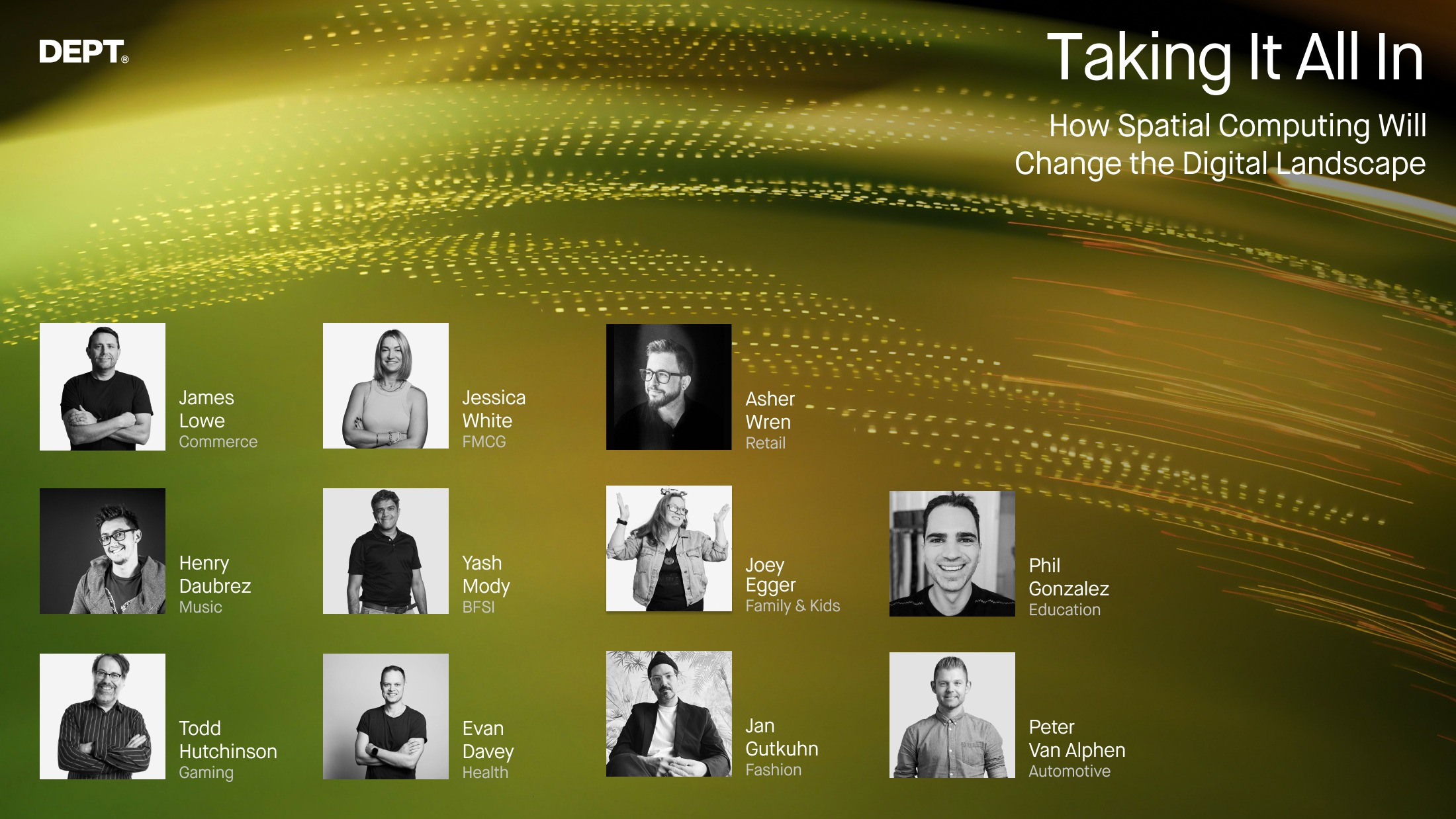

Commerce
James Lowe – VP Commerce APAC
The goal of an e-commerce website is, ideally, to sell products, and they do that by simulating real life shopping experiences online. We add products to a virtual ‘cart’ and virtually visit the ‘checkout.’ The reality is, though, that there is still a huge gap between real-world touch and feel experiences talking to a salesperson and online shopping. This is changing.
From immersive experiences, viewing a rug in your room or a hologram of yourself sized with those new jeans, the effect of spatial computing in reshaping the e-commerce experience will be massive. It’s not only about being able to try out that rug in your living room but how that will affect light and sound, changing your experience of your own home forever.
Spatial computing, whether AR, VR, or any reality that edges us closer to replicating real-world shopping and in-store personalisation, will change how we shop forever. We have only scratched the service.
The targeted use of these technologies will be important. Successful brands will use spatial computing subtly (not everyone has an Apple Vision Pro!) and AI passively to bring users on the journey where required and blow our minds at other touch points in the mixed reality commerce journeys of the future.
This is a moment for commerce brands to set themselves apart in a field wide open with opportunity. Brands that continue creating immersive, personalised shopping experiences, replicating and augmenting real word experiences as the technology evolves, will emerge as leaders.
Best encounter with spatial computing so far?
I bought a trampoline for kids for Christmas this year. The AR feature on the site allowed me to video my front yard in real-time, position the trampoline in the yard, and walk around it, seeing the placement from different angles. I was surprised at how accurate it was. I got my tape measure out to verify (didn’t trust the tech!), and the virtual placement was spot on.
This was a super helpful application of AR enhancing my buying experience. I had limited space in my yard, so this augmented view of my yard sold it for me. AR placing products in situ is not the most cutting-edge example of spatial computing, but it was the best example I have personally experienced and led me to the checkout.

FMGC
Jessica White – General Manager Creative & Content Australia
I’ve been a storyteller my entire life. Sitting around the table with my family, we took turns to see who could tell the best story. I love the creativity of it, the challenge of finding the right hook, and helping brands become famous. Famous in the category, internally, and most importantly, famous with consumers, making their product the one they reach for first.
Fast forward 10 years, storytelling is more diverse than ever, with TikTok as a platform for entertainment, self-expression, and search! Personalisation gives tailored brand experiences across email, social channels, and online shopping. Technology is making it easier and easier to reach consumers and tell them richer stories. Spatial Computing is enabling us to seamlessly merge the physical world with the magical world of digital. Picture consumers virtually learning how to brush their teeth properly or wash their hands effectively in their own spaces, testing, learning, and experiencing them firsthand.
The digital world as we know it has changed forever. Things are only going to get more exciting from here. We’re taking storytelling to a new dimension, and I’m here for it!
Best encounter with spatial computing so far?
From virtually trying on beauty products to unlocking a world of interactive content and promotions, spatial computing empowers marketers with the tools to weave captivating stories. Consider the experience of trying on different makeup looks in augmented reality or seamlessly accessing additional information and promotions while browsing in-store. One may be more functional than the other, but both avenues create a richer storyline for consumers to explore, transforming mere transactions into memorable experiences.

Retail
Asher Wren – VP Growth Americas
Spatial computing will change the game in commerce in several ways— from behind-the-scenes operations and logistics like inventory and supply chain management and helping warehouse staff to locate items more efficiently through to creating more immersive, contextually relevant customer experiences at-home or in-store.
Industries that typically rely on more tactile, white-glove customer journeys— e.g., luxury fashion, auto, home furnishings, etc. will see a completely revolutionised retail experience. Shopping experiences in those industries are increasingly digital. Still, nothing compares to being able to feel the finish on an Eames chair, feel the weight of a Rolex in your hand, or see the movement of a Gucci garment.
Spatial computing will put customers on their catwalks in this season’s must-have, in the driver’s seat of a luxury car, or in a newly decorated and kitted-out home. It’s the next step in bringing elevated shopping experiences for high-ticket items into the home, changing retail forever.
Best encounter with spatial computing so far?
I’m a big fan of using augmented reality to make static artwork come to life. It’s an oldie but a goodie— There’s something very punk rock DIY about the MoMAR concept— a group of artists leveraging augmented reality to overlay digital art onto traditional works of art in galleries.
The concept challenges the notion of what art is and pokes fun at the elitism of the fine art world. On the other end of the spectrum, for businesses, using AR to bring billboards to life can create engaging, buzz-worthy brand activations while also making existing OOH media buys work harder by establishing measurable paths to purchase from static billboards to digital/e-commerce.

Music
Henry Daubrez – CEO & COO Dogstudio/DEPT®
Past the expected entertainment outcome from a device like the Apple Vision Pro, there’s a huge potential for learning new skills.
I used to (badly) play the guitar as a teenager, by myself, at home, and I do remember printing sheet after sheet of chords and going through the painful journey of constantly moving from the sheets to the fretboard. I mean, nothing crazy, but it was still getting in the way of me learning a new skill.
Now, looking at the future of spatial computing and offering information contextually, there’s a future in which learning music can be offered directly in relation to the instrument, showing you the chords next to the fretboard or the notes on top of the piano keys. Even better, leveraging AI, there’s a very short path to suggesting the next note and giving you the fundamentals of improvisation.
This is one simple example but music, being attached to a different of our senses, has the potential to be experienced differently thanks to the evolution of headset technologies.
We’re still early despite the dozens of years separating us from the initial generations of headsets and the most recent ones.
Technology is finally getting to where we can experience the full expected potential: a seamless, integrated, contextual experience intertwined with reality. The Apple Vision Pro and the recent Quest3 are one iteration closer to that dream but not fully there yet.
I’m looking forward to the possibilities of experiencing and learning music (and a lot of other things) in a visual, natural, and neck pain-free manner.
Best encounter with spatial computing so far?
As mentioned, all the passthrough (and therefore avoiding pure VR) experiences around the learning of new skills are fascinating to me, whether it’s about cooking, learning an instrument (check PianoVision), or learning a trade. People directly think about gaming when looking at these devices, but the untapped education market is endless.

BFSI
Yash Moody – CTO APAC
Spatial computing presents an unparalleled opportunity to improve financial literacy worldwide by making complex concepts more accessible and engaging across diverse age groups and demographics. By leveraging immersive technologies, financial education can become more interactive, intuitive, and inclusive, empowering individuals to make informed financial decisions and participate more effectively in the global economy.
The convergence of fintech innovators and traditional financial institutions facilitated by spatial computing can lead to the development of groundbreaking products and methodologies prioritising human-centric design and user experience. This collaboration can drive innovation and efficiency while addressing the evolving needs of consumers in the digital age.
Best encounter with spatial computing so far?
Several financial organisations have explored virtual branches using VR to make banking more accessible and inclusive. This makes banking more cost-efficient, secure, accessible, and personalised.
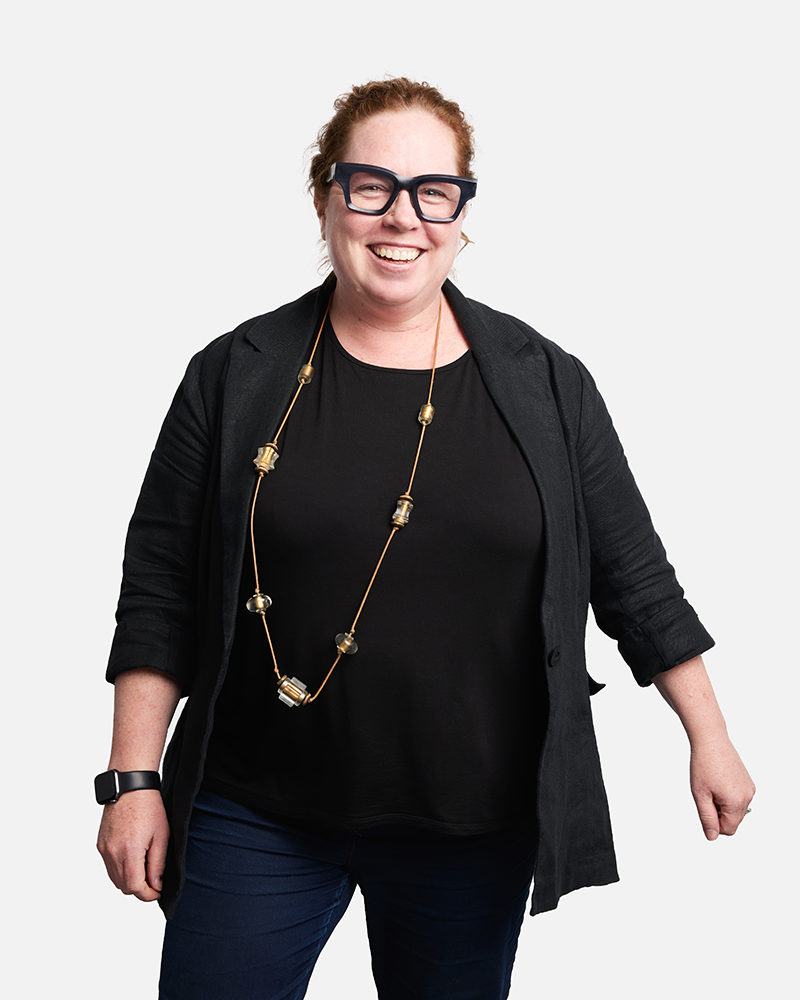
Family & Kids
Joey Eggar – Executive Director Games & Emerging Tech
When it comes to tech and kids, at the end of the day, it’s not so much about the technology, it’s about the experience.
For kids, it’s about what’s fun, intuitive, and engaging: What can tell a good story. What can provide a cool challenge? And for their caregivers – is my child safe using this device and playing this experience?
It’s our job to create spatial interactive experiences that feel natural to that device and are intuitive and safe for the user to play. We want the experience to work for the end user, not just for the device.
We’ve been working on variations of Spatial technology since 2012, kicking off with the award-winning The Hidden Park, which used a form of AR before AR was formally integrated into phones. Since then, we’ve crafted many projects utilising AR with well-known kids’ brands such as The Wiggles and Sesame Street, VR to help kids reduce stress and anxiety during needle procedures with the Webby Award-winning SmileyScope, and with XR currently having fun with some projects that blend Mixed Reality headsets with real-world experiences.
With all our spatial work, we know that the tech is just a tool, and it’s the enriching experiences it facilitates that truly matter.
Best encounter with spatial computing so far?
It’s very simple, but the XR devices such as APV, Hololens, MetaQuest, and MagicLeap, when you initially map the environment around you. They all do it differently, but I never get bored of it, and it makes me feel like I’m on a Star Trek holodeck.

Education
Phil Gonzalez – Director of Engineering
Spatial computing, along with mixed and augmented reality technology, has the potential to redefine the educational paradigm.
If we were to bring a time traveler 200 years from the past to the present, 99% of our world would look vastly different to them: a classroom, however, would look mostly the same: a set of desks facing a presenter at the front of a room. While online, self-paced, and digital learning has started to take form in the last couple of decades, it still isn’t a stand-in for the in-person experience. You don’t have to look further than standardised test scores dropping dramatically during the COVID-19 lockdowns for evidence of this.
However, this is fortunately on the path towards change. VR/MR headsets allow learners to step into nearly any subject matter virtually. Want to learn about the human body? Shrink yourself down to the size of an organelle and explore it yourself! Perform lab observations in VR and later generate reports about those observations on a traditional computer. Studying WWI? Step into the moment of Archduke Franz Ferdinand’s assassination and political turmoil and speak with virtualised eyewitnesses.
MR/VR also enables a sense of presence missing from virtual learning experiences. With an online can an instructor know if students are engaged and understanding the material or disengaged and lost? Live video calls can sometimes help, but monitoring the facial expressions of 20+ students over Zoom doesn’t always work. Newly developed VR technologies enable eye tracking and facial gesture mapping that allow virtual avatars to appear confused, lost, or engaged and learning.
Best encounter with spatial computing so far?
Arizona State University’s DreamScape Learn. I had the pleasure last year of demoing some of the courses they offer and was blown away by the level of interactivity.

Gaming
Todd Hutchinson – Creative Director
Virtual Reality has never managed to live up to the promise of Ready Player One. Although it’s not surprising, only a select few are happy to block out their reality in favour of a digital one, and then there’s the motion sickness… blargh.
But spatial computing is a very different and vomit-free beast. It offers a brave new future, where real and digital worlds collide to make both cutting-edge and simple intuitive experiences.
Once the hardware reaches the point of looking like ordinary glasses, I can imagine everyone wearing them to engage in daily digital activities. From a gaming perspective, there are countless opportunities to integrate gameplay with the world around. Hide behind the couch to avoid enemy fire in an FPS, solve escape room experiences in your bedroom, or create and manage complex cities in your lounge.
The future seems bright, I gotta wear [spatial computing] shades.
Best encounter with spatial computing so far?
First Encounters. It’s a very simple and fun game in which players blast away at fuzzy little aliens to capture as many as they can before time runs out. The cool integration of Spatial Computing is that it starts off in the player’s room, and as they fire their blasters, they blow holes in their walls to reveal an alien world beyond. The aliens move from their alien world into the player’s room, and the player has to walk around to find hidden aliens. By the time the round is up, the walls are destroyed, and the player is now in the alien world.

Health
Evan Davey – VP Growth APAC
In healthcare, spatial computing isn’t just about enhancing patient experiences; it’s about revolutionising care delivery. Imagine surgeons seamlessly accessing patient data in real-time during procedures or medical professionals conducting virtual simulations to refine treatment plans.
Spatial computing empowers us to bridge geographical gaps, providing remote consultations and monitoring for patients in rural areas. However, it’s not without its challenges—ensuring data security and privacy remains paramount.
Yet, the potential to improve outcomes and streamline processes is undeniable. As we navigate this transformative landscape, collaboration between healthcare providers, technologists, and policymakers will be crucial in realising the full benefits of spatial computing for the industry.
Best encounter with spatial computing so far?
I’m absolutely taken by the breadth of use cases for the Apple Vision Pro, so it’s hard to nail it down to just one example. One experience I’m particularly looking forward to being an Australian – and air travel out of the country taking at least 8 hours – is taking an Apple Vision Pro onto the plane, watching movies in what will feel like a theatre rather than a cramped economy seat and working in that same seat on a projected 4K screen, rather than bending over my iPad. Add to that the privacy that comes with the APV, and I’m pumped to get onto that plane!
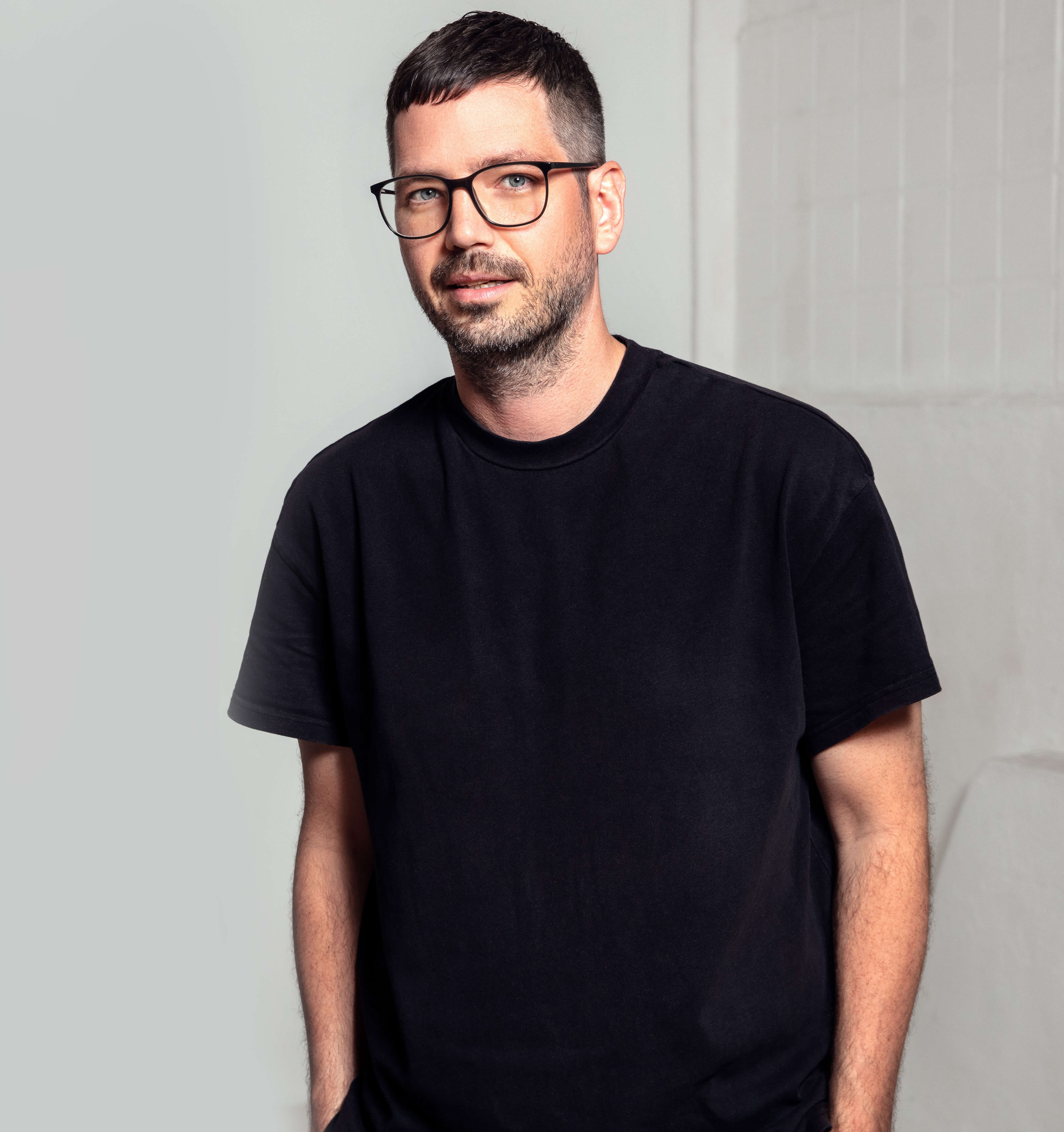
Fashion
Jan Gutkuhn – Director Web3
Spatial Computing was invented for the fashion industry. In the world of fashion, the allure of the runway is undeniable. Yet, the digital representation is full of limitations and disappointments. Spatial computing offers a lifeline, bridging the gap between the real and the virtual. It’s a designer’s dream becoming reality, setting the industry free.
The biggest opportunity lies in creating more human and emotional experiences through 3D – directly from the creative director’s imagination. No proxy, no samples, no shootings. Fully immersive experiences evoke a sense of wonder and delight – something missing in the realm of the 2D screens and CR-optimised online shops of today.
Imagine entering an immersive, highly emotional brand universe, seeing yourself in the latest runway looks, and chatting with a virtual stylist who understands your unique tastes and preferences based on your body measurements. Or attending a virtual fashion show where you can interact with models and designers in real time. For as long as you want – and you will want to stay and get lost, and shop…
These are the experiences that bring fashion to life in ways that were previously unimaginable. It allows brands to democratise the front row, inviting anyone and everyone to immerse themselves into the brand’s universe like never before.
This is it. Unlimited creativity and pure emotion. Directly from the designer’s brain into your Apple Vision Pro.
Best encounter with spatial computing so far?
Our work with H&M on creating their virtual showroom. 69% of the respondents said that the showroom had piqued their interest in a virtual H&M brand experience.

Automotive
Peter Van Alphen – Strategy Director Growth Europe
The world of mobility is rapidly changing from physical environments to digital experiences. Legacy manufacturers and emerging industry players are reinventing and rethinking the traditional paradigms. Electric vehicles, digital-first buying models, technology-led information systems, and self-driving solutions are leading the way in society and will become the standard.
In the realm of automotive, spatial computing is reshaping the driving experience, both within and beyond the vehicle’s interior. Innovations such as Augmented Reality Dashboards, Advanced Driver Assistance Systems, Predictive Maintenance, and Smart Parking Solutions exemplify the dynamic changes transforming the automotive industry. I am particularly excited about the potential of spatial computing to address traffic congestion and enhance driving safety.
At DEPT®, we’re at the forefront of innovation in the automotive landscape. We’re strategically positioned to provide comprehensive end-to-end customer experiences, leveraging the power of AI, technology, creativity, and media.
Best encounter with spatial computing so far?
I am deeply impressed by the spatial computing solutions that Tesla is developing and integrating into their vehicles. From the adaptive cruise control feature to the sophisticated infotainment systems and the advanced navigation system capable of recognising environmental surroundings, Tesla is enhancing driving safety and security significantly. I eagerly anticipate the innovations and advancements that lie ahead.
Fostering creativity and curiosity
Spatial computing has the power to revolutionise how we interact with technology, reshape industries, and redefine user engagement. It’s a call to action for businesses to embrace this technology as a catalyst for innovation and growth, unlocking new opportunities to create immersive, personalised experiences that transcend traditional boundaries.
However, realising this potential requires overcoming challenges such as data security, logistical integration, and ensuring equitable access. Despite these hurdles, the consensus is clear: The future of spatial computing is limitless, and it’s up to businesses to seize the moment and shape the digital landscape of tomorrow.
With a deep understanding of emerging technologies and a track record of delivering cutting-edge digital solutions, our teams at DEPT® are uniquely positioned to guide businesses through the complexities of spatial computing integration.
Creativity x AI: An interview series exploring the near future
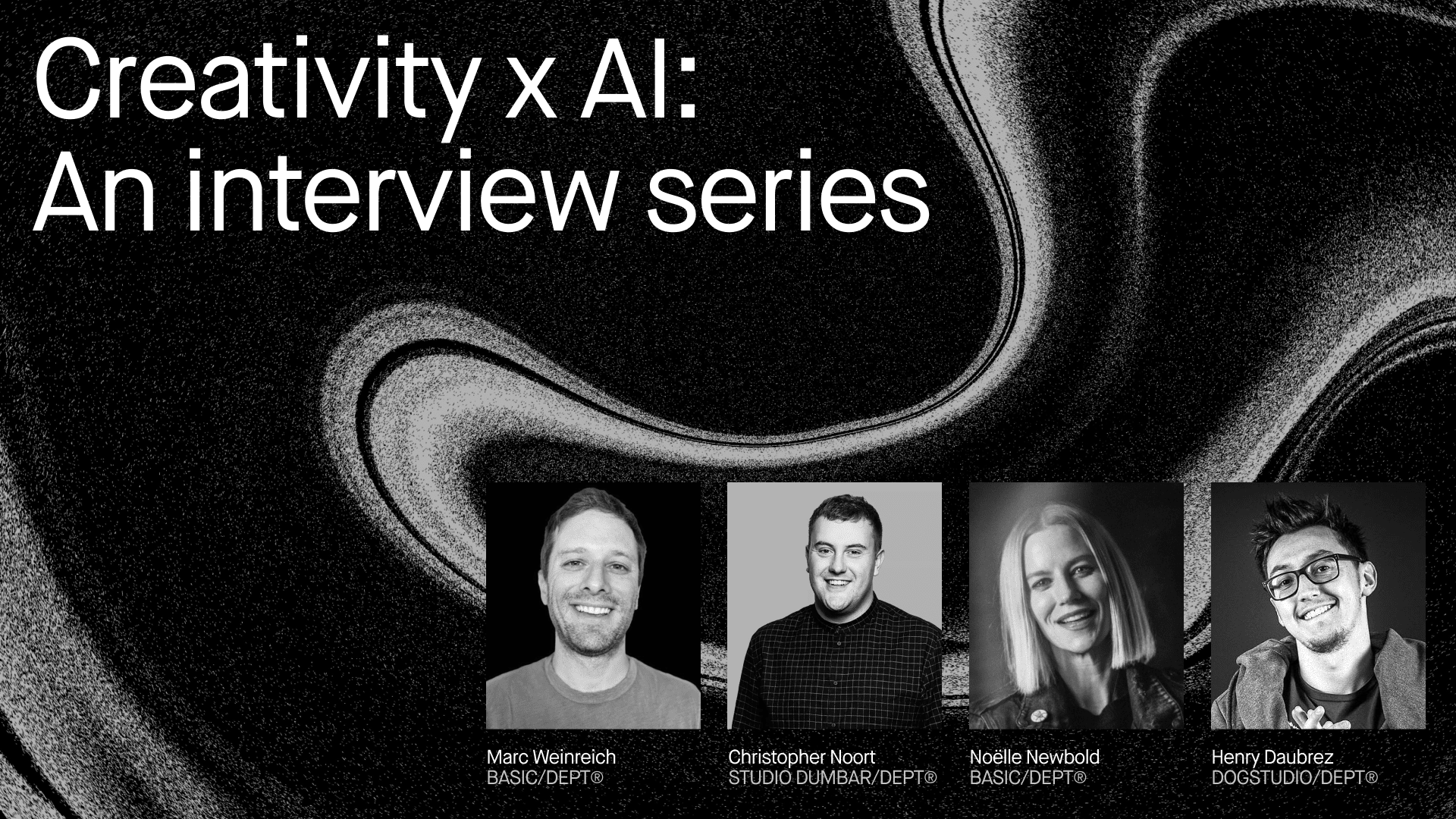
Insights
View all insights
The international beauty brand essence was founded in 2001 by cosnova, one of Germany’s largest cosmetics companies. Ever since, the company has demonstrated innovation, zeitgeist, and a deep commitment to engaging young, digital-savvy consumers.
With the support of the game developers at global digital agency DEPT®, essence has blurred the boundaries between beauty, play, and self-expression by developing the adventurous Roblox Experience “essence FUN PARK.”
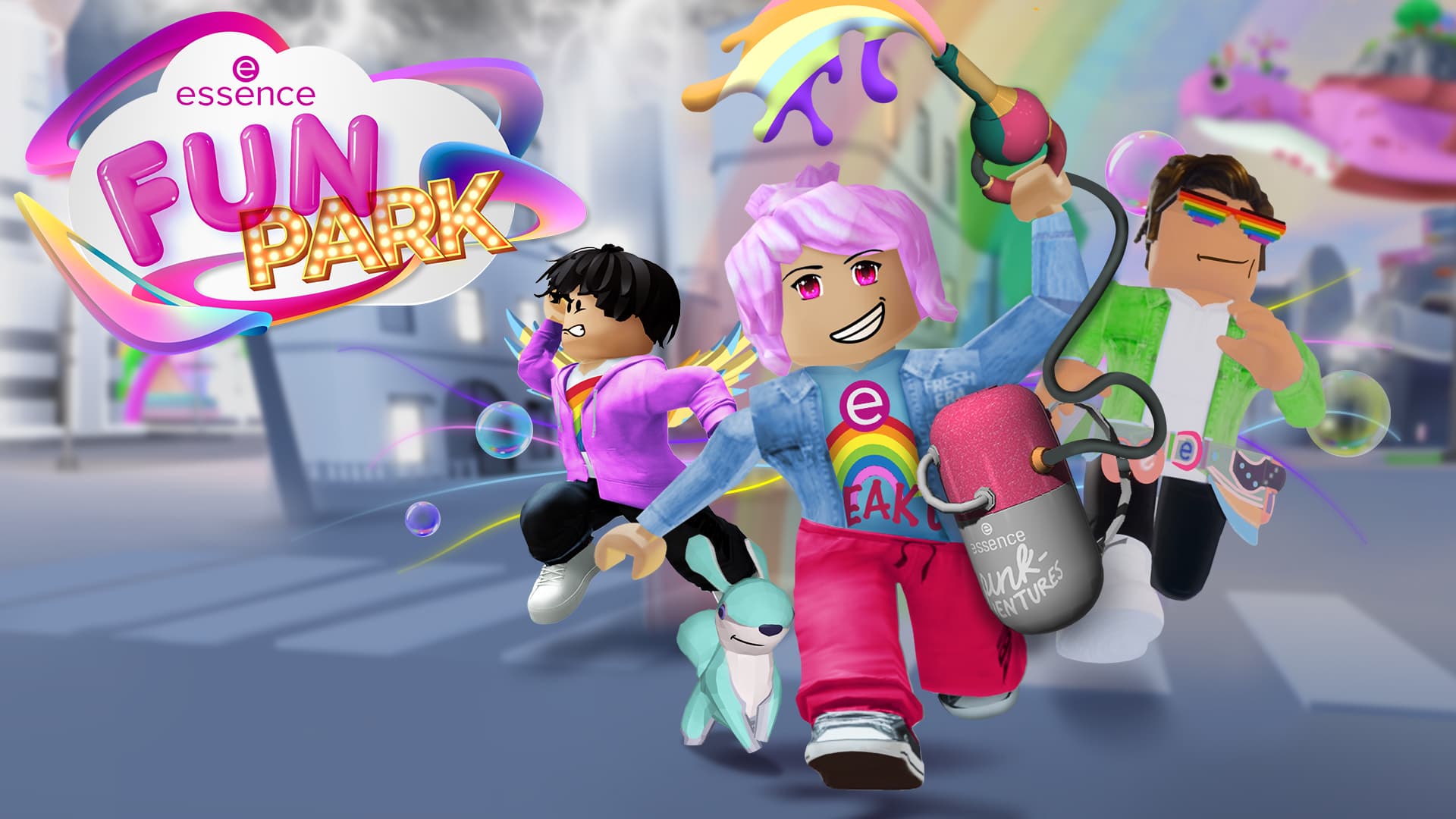
Reaching Gen Z and Alpha
Trends are constantly evolving in the cosmetics industry and essence was faced with the major challenge that the industry is in a state of upheaval, driven by the dynamic preferences of tech-savvy Gen Z and Alpha consumers. The challenge was clear: how can the essence brand authentically connect with the young target group?
Given the constantly changing beauty industry, essence has set the long-term goal of being relevant to Gen Z and Alpha. But to achieve this, it is not enough for the target group to love the products – the brand must share and exemplify the values of the target group.
Therefore, the challenge was not just to sell essence products, but to be a catalyst for positive change – both virtually and in the real world. This was also combined with the brand mission to ”make beauty fun.”

Finding a solution to “make beauty fun”
In response to these challenges and goals, essence looked for an innovative solution and called in the expertise of the global digital agency DEPT®. After the kick-off workshop, followed by an intensive ideation phase, the idea of developing a Roblox experience was born, and the foundation for the ‘essence FUN PARK’ was laid – an imaginative, immersive and colourful world on Roblox.
In this way, the brand’s young target group was to be addressed exactly where they spend a large part of their time: on gaming platforms. But why Roblox?
The platform’s user statistics speak for themselves:
- With 214 million monthly and an incredible 70.2 million daily active users, Roblox is currently one of the most important gaming platforms for Gen Z and Gen Alpha.
- 53% of users are over 13 years old and the fastest growing demographic segment is between 17 and 25 years old.
- The gender distribution on Roblox is almost balanced with 51% male and 44% female users, the remaining 5% are unknown.
“We believe that our target group will continue to develop on this platform, which is why we decided on it. And with DEPT® as a strong partner, we are confident that we will continue to grow beyond the boundaries of the beauty industry.”
— Thorsten Mühl, Chief Digital Marketing & Experience Officer, cosnova
Creating the Roblox game
At the heart of the ‘essence FUN PARK’, players can expect a world full of joy and harmony, a real safe space that stands out from the hectic and aggressive nature of typical game worlds. Players start their journey of discovery from the floating, castle-like essence space. Various islands such as Pink Beach, Turtle Island, Gray City, and the new underwater world “Ocean Detox” await them.
The products and core values of the essence brand have strongly influenced all locations and their designs. Colourful and diverse, without microplastic particles, and completely vegan, the ‘essence FUN PARK’ underlines its commitment to sustainability and beauty.
We also created an environment in which the use of real currency (Robux) is unnecessary. By collecting ‘essence coins,’ players can purchase everything they need, such as paint tools or stylish avatar items from the ‘Chic Chamber.’
The experience is characterised by popular game mechanics, environmentally conscious mini-games, and exciting quests. Instead of the usual competitive dynamics, we rely exclusively on cooperative game mechanics. With friendly house painting tools instead of aggressive shooter elements and cute ‘Pick up & Delivery’ and ‘Plant & Grow’ quests, the game offers entertaining tasks for younger kids and teens. And if you just want to hang out with friends, you can use our chill zones with a Ferris wheel, tree house or sun loungers.

A fresh perspective
essence x DEPT® is a story of innovation, courage, trust, and teamwork. The company was looking for fresh ideas around the connection to Gen Z and Gen Alpha and found its partner in crime in the DEPT® Web3 team.
The first result of this new connection is the joint initial development of the Roblox game ‘essence FUN PARK.’ At the same time, DEPT® was commissioned to support cosnova’s website team in strategy and UX conception.
Questions about Roblox?
Account Director & Head of Business Development
Victor Marcus Lunde
Discover more
DEPT® is proud to once again have been named one of the Fastest Growing marketing agencies by Adweek, securing #34 on the Top 100 list, #5 on the Large Agencies list, and #9 in the International category. This recognition is a reflection of the rapid growth DEPT® has experienced in the past three years, with revenues growing by 232%.
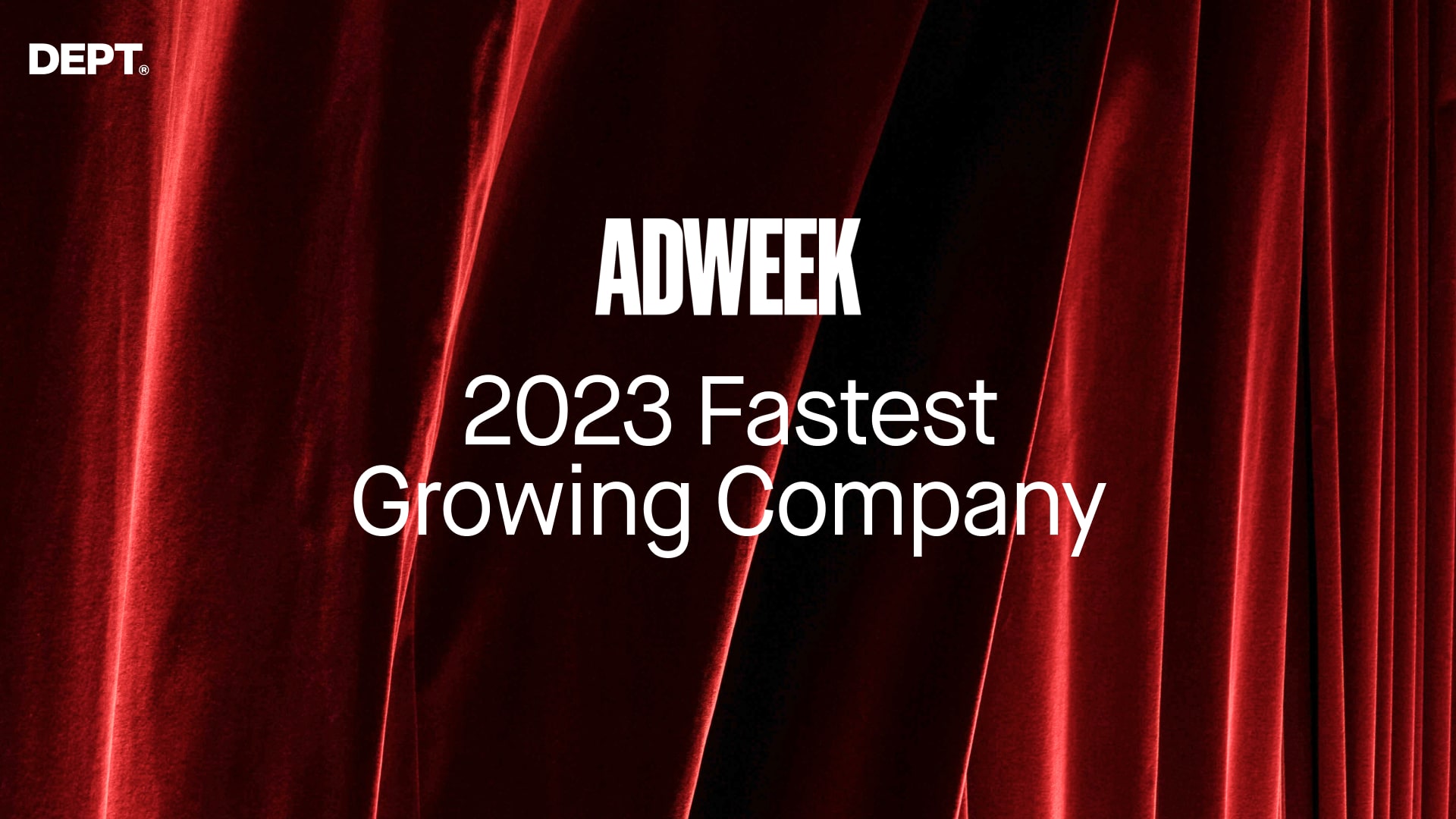
In the last year, DEPT® grew to 4,000+ employees across five continents and achieved $500+ million in revenue. DEPT® also expanded its client list by winning competitive pitches for brands like Gucci, Inter Milan, Constellation Brands, and BMW, and grew relationships with existing clients like eBay, Moodys, and Google.
At the forefront of tech and marketing, DEPT® delivered groundbreaking work for brands such as Google, Amazon Prime, HAPE, Philips, H&M, and Patagonia. The company also continued its buy-and-build strategy by welcoming six new agencies to the DEPT® family, which also represented a significant expansion into the APAC region.
DEPT® attributes its fast growth to three foundational elements:
- 50/50 tech and marketing focus. If an agency is underweight on either side of this equation, it will not be able to deliver enough value for clients. We sit at the intersection of both. Our digital-native, platform-agnostic teams creatively solve clients’ problems and deliver culturally and financially impactful solutions.
- Pioneering emerging tech. Being at the forefront of emerging tech is essential for any agency that wants to grow fast. And that’s not about being a hype train that was shouting Metaverse last year, AI this year, and maybe Spatial next year. It is about having teams entrenched in these technologies and having the actual work to show for it. We’ve futureproofed our business by embracing the disruptive potential of emerging tech like Web3 and AI.
- Being mindful of our impact on the world. We’re proud to be the first global agency to achieve B Corp certification in 2021. We’re committed to having >15% of revenue come from impactful work by the end of 2023, as we believe this is one of the greatest ways to accelerate the impact we can have on society. Our healthy organic growth is based on longstanding partnerships with clients and keeping them happy, proven by our yearly revenue retention of over 100%. Additionally, more than 50% of our clients grew from single to multi-service. This happened at 15 of our top 20 accounts, which account for 30% of our revenues. We’ve also supplemented our existing business with a >50% win rate in new business pitches.
As a certified B Corp, Dept is committed to using its growth to achieve even higher sustainability and DEI benchmarks. In the last year alone, the agency has grown to more than 4,000 employees across five continents. The full-service agency’s clients include BMW, Canva and Gucci.
— Adweek Staff
A year of global recognition
It’s been a record-breaking year for DEPT®, having been recognized as one of the leading agencies in the industry by the majority of global industry award bodies. While we’re certainly not in it for the accolades, we are proud of winning over 60 awards so far this year, including:
- Shortlisted for Adweek’s Global Agency of The Year, alongside 4 other networks.
- Network of the Year and Agency of the Year (BASIC/DEPT®) at The Webby Awards.
- Holding the most number of finalists nominations and, again, being up for Agency of the Year at The Lovie Awards.
- Winning the Campaign US Digital Innovation Agency of the Year, and the Bronze award for Campaign’s Global Digital Agency of the Year.
- Winning Agency of the Year at the European Design Awards (Studio Dumbar/DEPT®)
- Being named Ad Age’s Design and Branding Agency of the Year (BASIC/DEPT®)
- And, we’re currently in the running for Marketing Week’s Agency of the Year, too!
These awards are an acknowledgment of the dedication of our teams and their commitment to creating work that delivers impact, and of our incredible clients who let us do what we do best.
Questions?
Global SVP of Marketing
Marjan Straathof

DEPT® 2024 Trends Forecast: Connectedness, Creativity & Culture
Explore the defining trends across culture, creativity, gaming, business, & technology alongside experts representing brands and businesses at the forefront of their industries—and join us in shaping the future of digital for 2024.

DEPT® Trends 2024: Connectedness, Creativity & Culture
What to expect
The rise of AI (and Barbie), Apple’s Mother Nature Impact Report, the economic slowdown, U2 in the sphere… We all know that a lot can happen in a year. And while no one can predict the future, we’re still going to try.
Join us in shaping the future of digital as we explore the trends across culture, creativity, gaming, business, and technology that are defining the year ahead.
Even within our fragmented, algorithmically-defined niches, we will be more connected than ever before in 2024. From the battle between creatives and AI, to the emergence of a data-driven economy, to the impact of global elections and events, we’re covering it all.
Rethink. Reimagine. Refocus. And prepare for the exciting and challenging times ahead alongside the most future-forward leaders, creatives, technologists, marketers, and digital consumers.
Want to stay ahead of the curve? Register now to join us on December 12th!
Meet the speakers

Tobias Cummins
Global SVP Clients & Managing Director Berlin at DEPT®
With experience in leading businesses in five countries, Tobias Cummins is DEPT®’s Global SVP of Clients and Managing Director in Berlin, responsible for business development across EMEA. Previously, as Managing Director of BYTE/DEPT®, Tobias oversaw expansion into New York and nurtured key relationships with major brands like Spotify, Google, and Twitch.
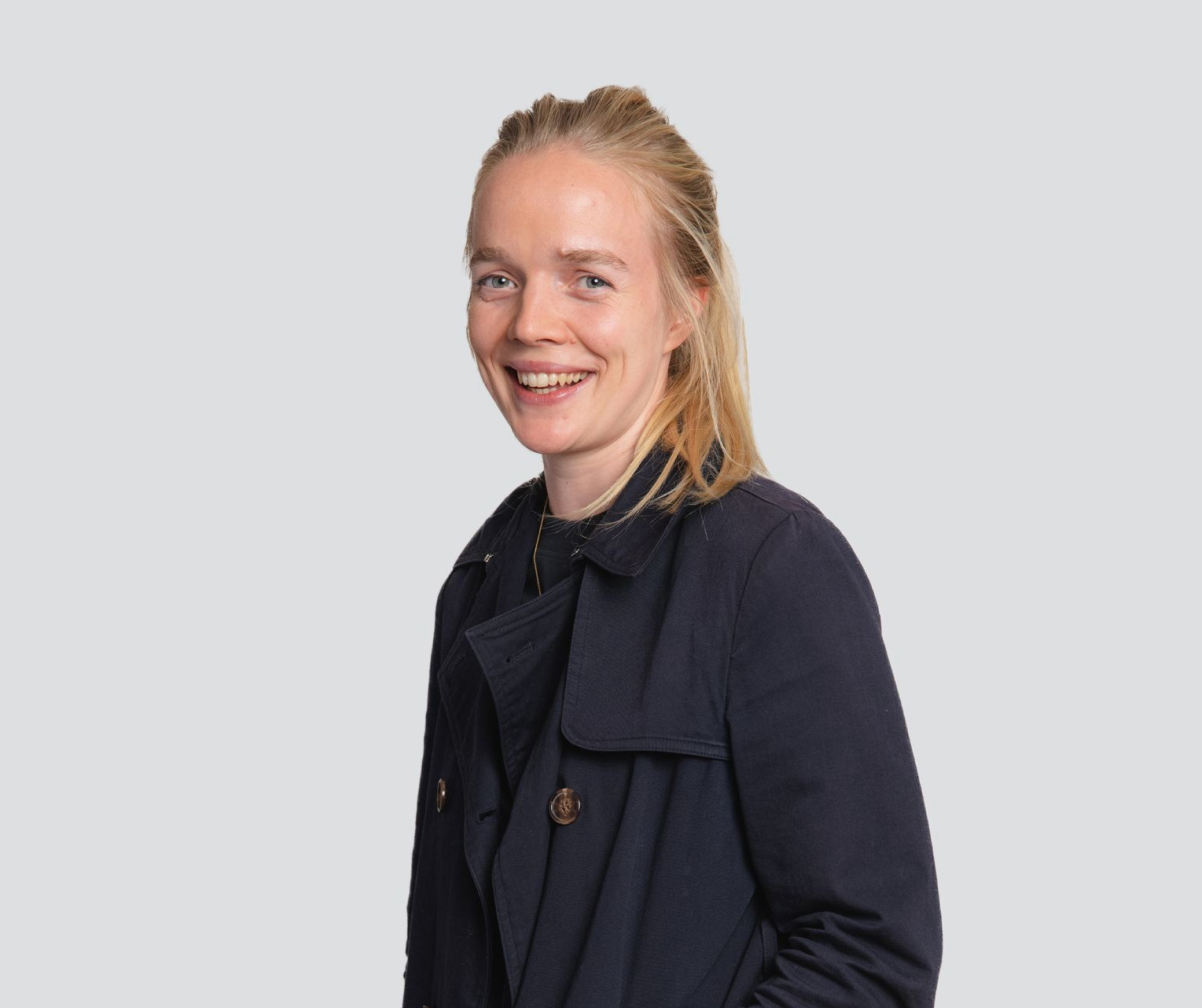
Isabel Perry
VP of Emerging Tech at DEPT®
Isabel Perry, VP of Emerging Technology at DEPT®, is an expert in Al, Web3, and the metaverse, revolutionizing businesses and ranked among the top 15 advertising executives by Business Insider. At DEPT®, she leads a team of over 400 specialists in five continents delivering innovative, pioneering work for brands such as Google, eBay and Philips.
With a degree in Architecture from Cambridge, she brings a unique approach to design and user experience. During her eight-year tenure at BYTE/DEPT®, she built and expanded the tech team, launched chatbots, augmented reality, games and dynamic advertising for clients including Just Eat UK, Spotify, and Meta, and managed a skilled team, securing lasting brand success.

Steven Denekas
Global SVP of Creative at DEPT® & Chief Creative Officer at BASIC/DEPT®
Steven leads the creative team at BASIC/DEPT®, where he inspires an artistic approach to concepting experiences for the world’s most admired brands. From BBDO and Wieden+Kennedy to Instrument, he’s amassed an impressive list of partnerships and awards throughout his career for his work on Levi’s®, Canadian Club, Nike, Patagonia, and Sequoia Capital. His shifting career has shaped his current role in building teams and environments that cultivate ideas, scale companies, and deliver results. His mission is simple: do work that creates legacies.

Alexis Stepanek
Strategy Director at BASIC/DEPT®
Alexis Stepanek is a Strategy Director with over 10 years of experience working with brands like Sonos, Levi’s, Nike, Marriott, and General Motors to build innovative digital products and services. She approaches every day with curiosity and empathy, working at the intersection of culture, technology, and brand purpose. She has a successful track record of collaborating with brands to make a positive impact and create meaningful connections with their customers. Alexis is passionate about accessibility, tech ethics, and disability advocacy – striving to ensure the impact matches the intent, for all people. Prior to BASIC/DEPT®, Alexis worked at Edenspiekermann, MRM//McCann, Instrument, and AREA17.

Bob Briski
CTO – DEPT® AI
Bob Briski is a technology leader with 20 years of experience in data infrastructure and strategy. As the CTO of DEPT®/AI, he leads the agency’s AI initiatives and projects and is dedicated to understanding client’s’ unique business needs and translating those into practical, innovative AI solutions.

Pooja Dindigal
Global Head of Impact at DEPT®
Pooja leads sustainability & social impact for global digital agency DEPT®. Before joining DEPT®, she had been with B Lab, the non profit behind B Corp Certification for over 6 years, where she helped to grow the B Corp Movement & advise leading businesses on their sustainability & impact journey. Pooja has a deep passion for addressing the intersections of climate change & equity for all people. She’s an amateur outdoorist, pop culture & food lover.
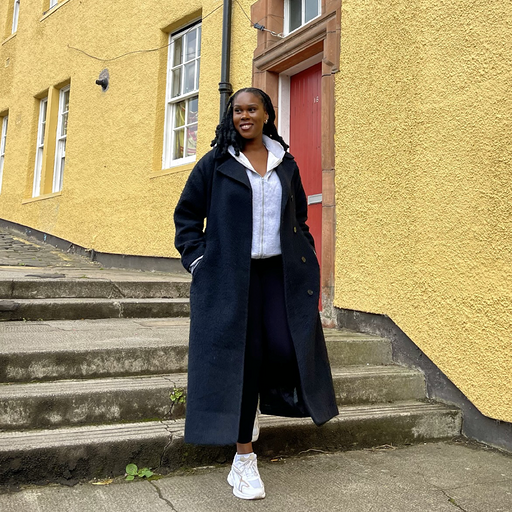
Sandra Masiliso
Global Diversity, Equity & Inclusion Lead
Sandra is the Global Diversity Equity and Inclusion Lead at DEPT and has sound experience developing robust strategies, partnering with external organisations, holding executives to account, developing and coaching senior leaders and taking a variety of audiences on a change transformation journey via the use of sound storytelling channels. Prior to joining DEPT, Sandra worked as the Creative Diversity Lead at the BBC, the Equality Diversity and Inclusion Manager at Newton Europe and as a Management Consultant working with leading FTSE100 companies where she held key agile project management, change management and business strategy roles. Sandra can effectively engage with clients at a range of levels, understand their business challenges and conduct thorough research to produce quality documentation that determines their future strategy. Sandra has also worked within the charity, intergovernmental and academic sector and is an award winning, international, motivational speaker
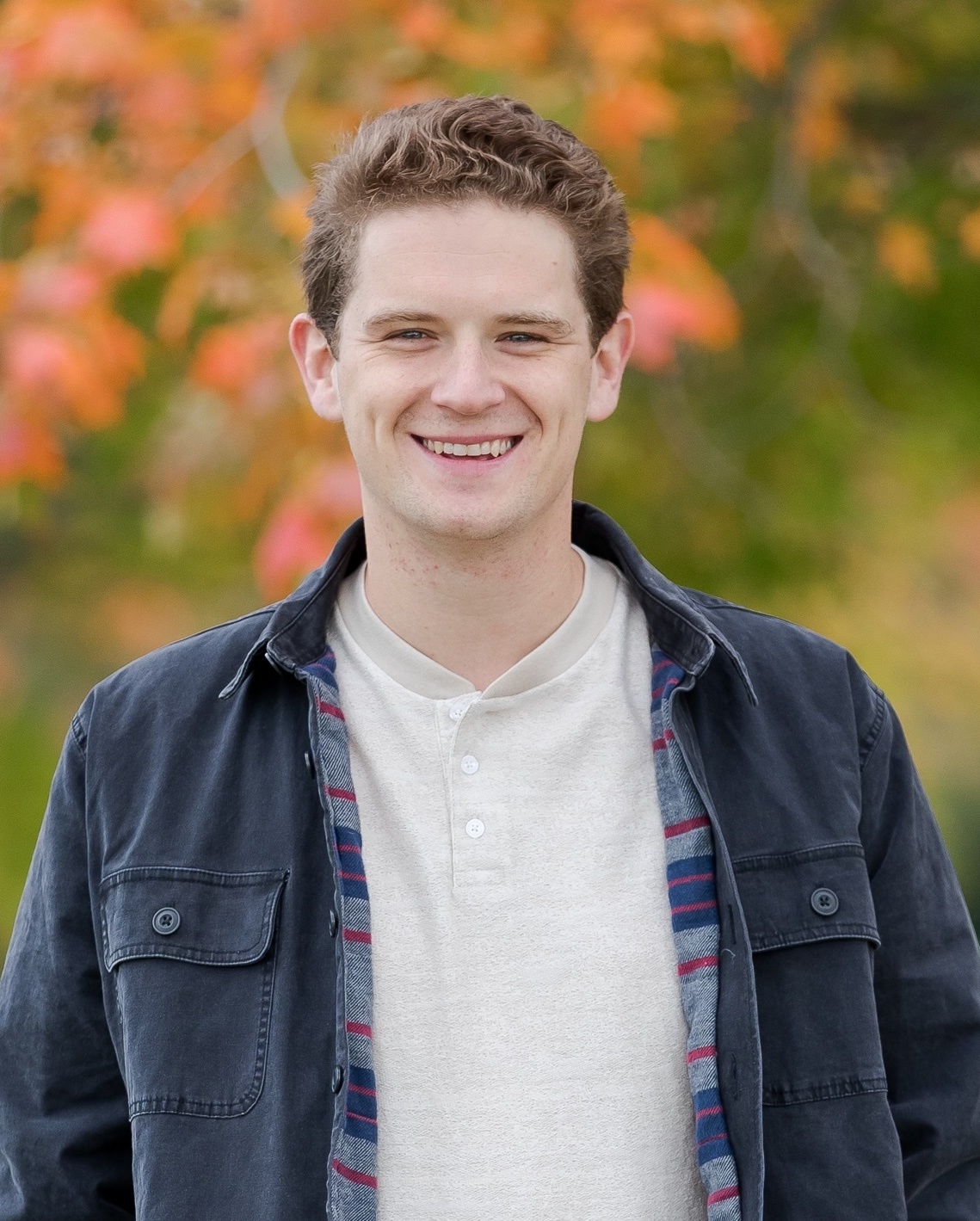
Chris Brook
Vice President, Google Marketing Platform, Americas at DEPT®
Chris joined DEPT in December 2022 and oversees the partnerships, sales, and strategic consulting services for our clients’ Google Marketing Platform initiatives. Prior to DEPT, he was an original employee of MightyHive (now Media.Monks/S4 Capital), where he opened the NY office and led strategy across data & digital media, creative, content, and technology for clients like LG, Mondelez, Goldman Sachs Bank, TIAA, Caesars Entertainment, and Nationwide Insurance. Chris spends most of his time at his house in VT trying to predict the role that consumer privacy will have on our clients’ adoption of future-proof marketing and advertising technologies.

Joey Egger
MD at DEPT®/Family (APAC)
Emmy, Peabody, and Webby award-winning kids digital content specialist with 20 years of experience, including Sesame Workshop and ABC Kids. Joey and #teammoo are proud to collaborate, innovate, and play jazz flute with the world’s most respected kids’ content creators, non-profits, healthcare and educational specialists to bring their visions to life.



